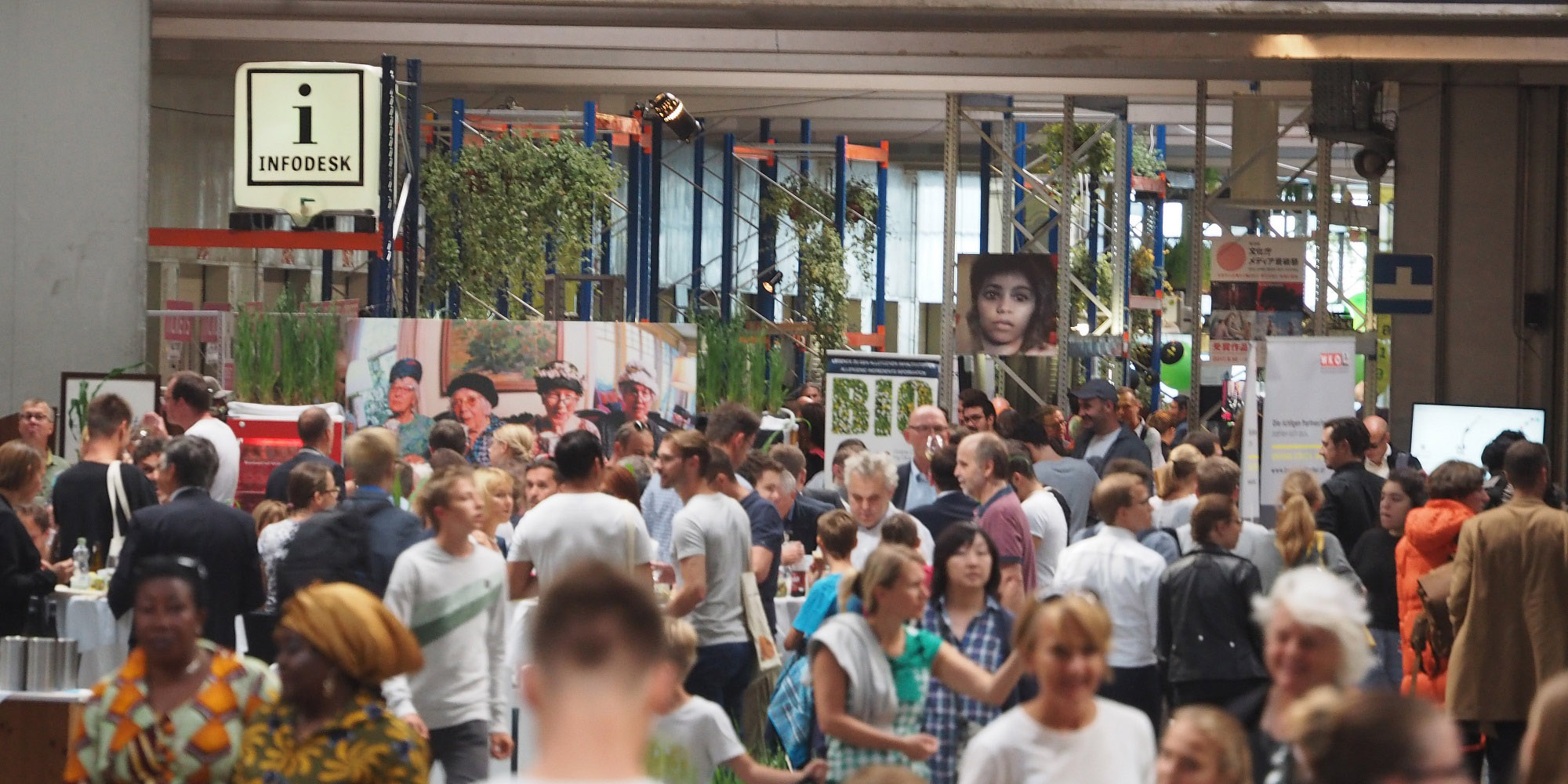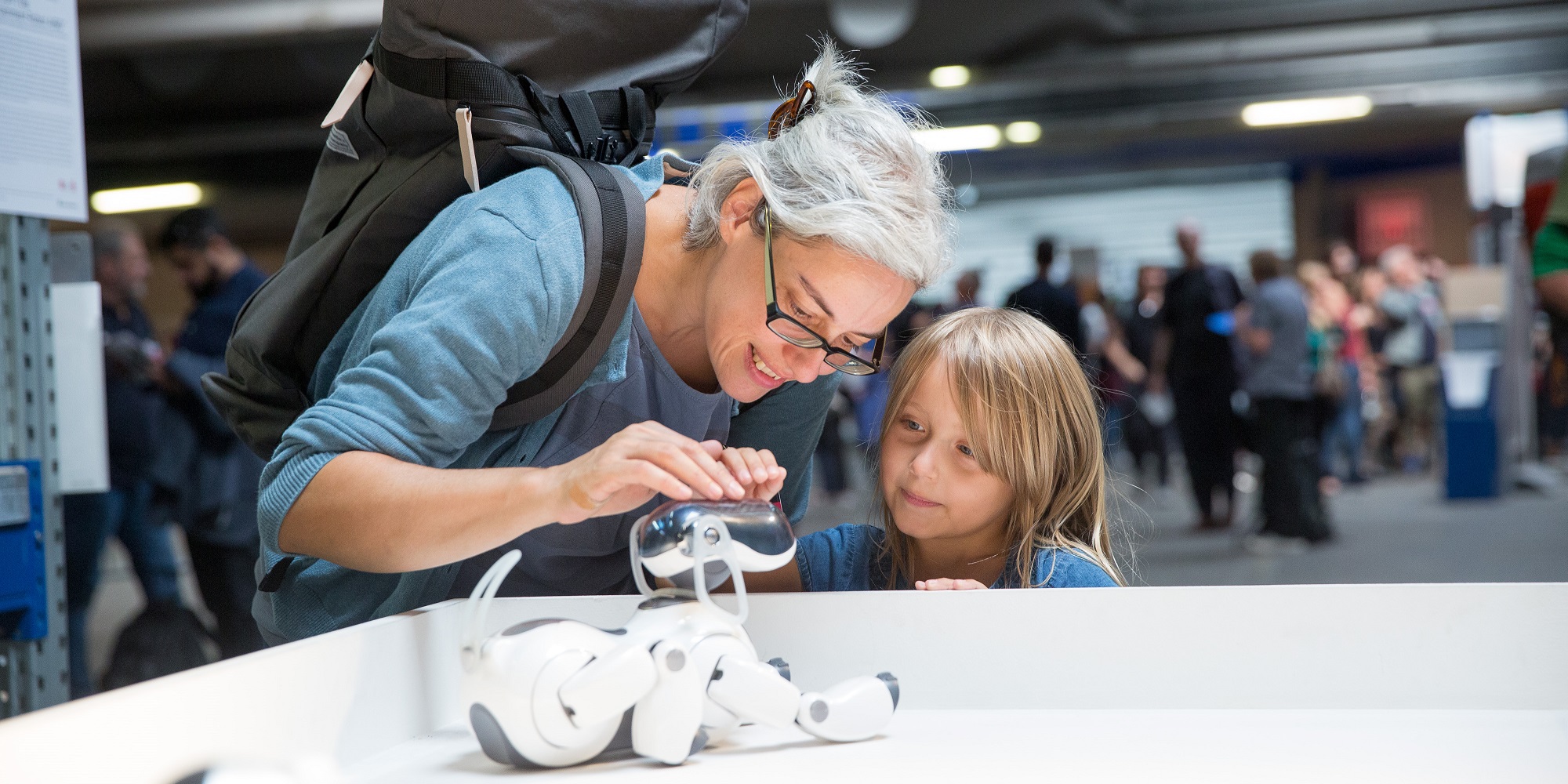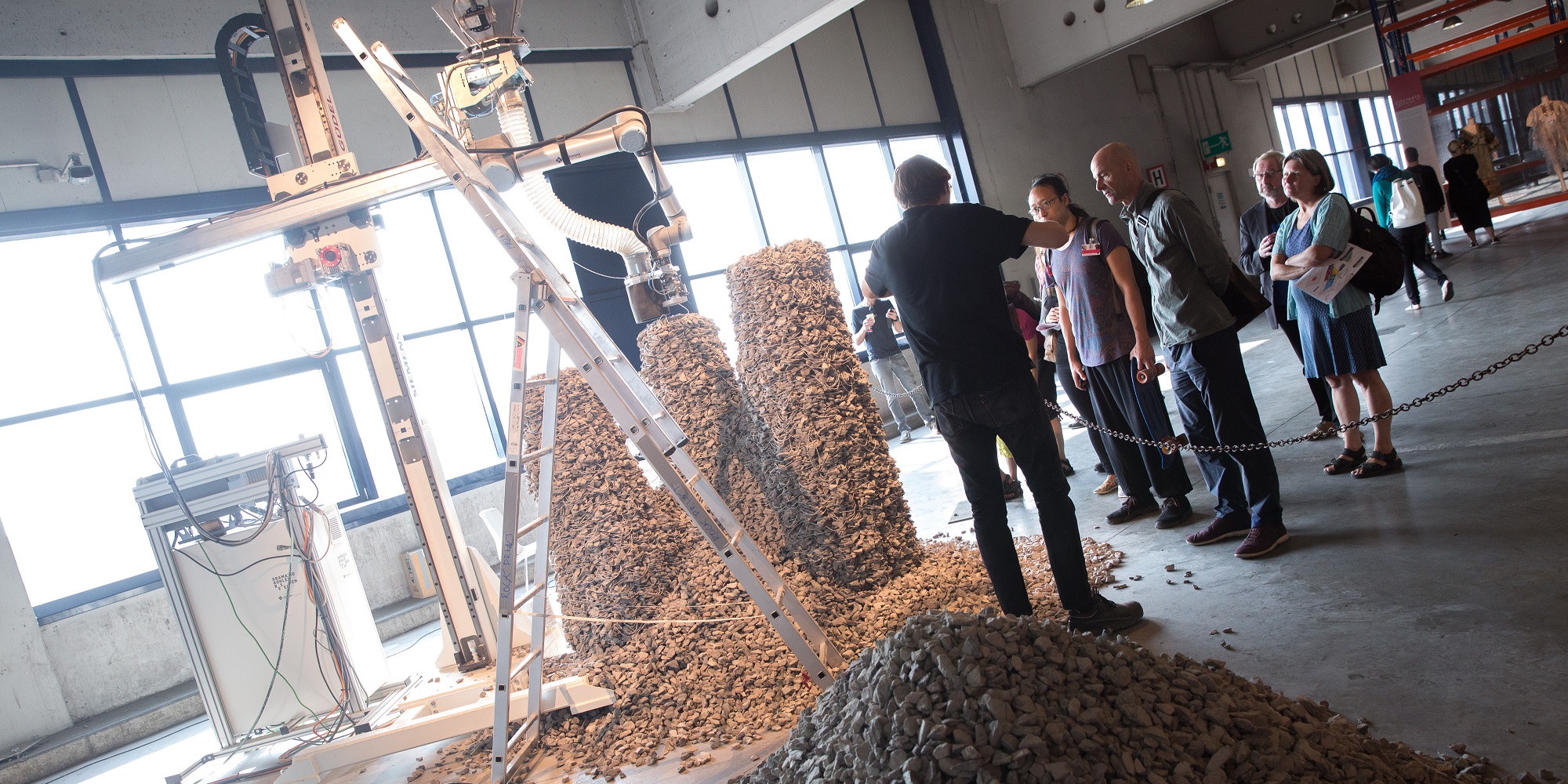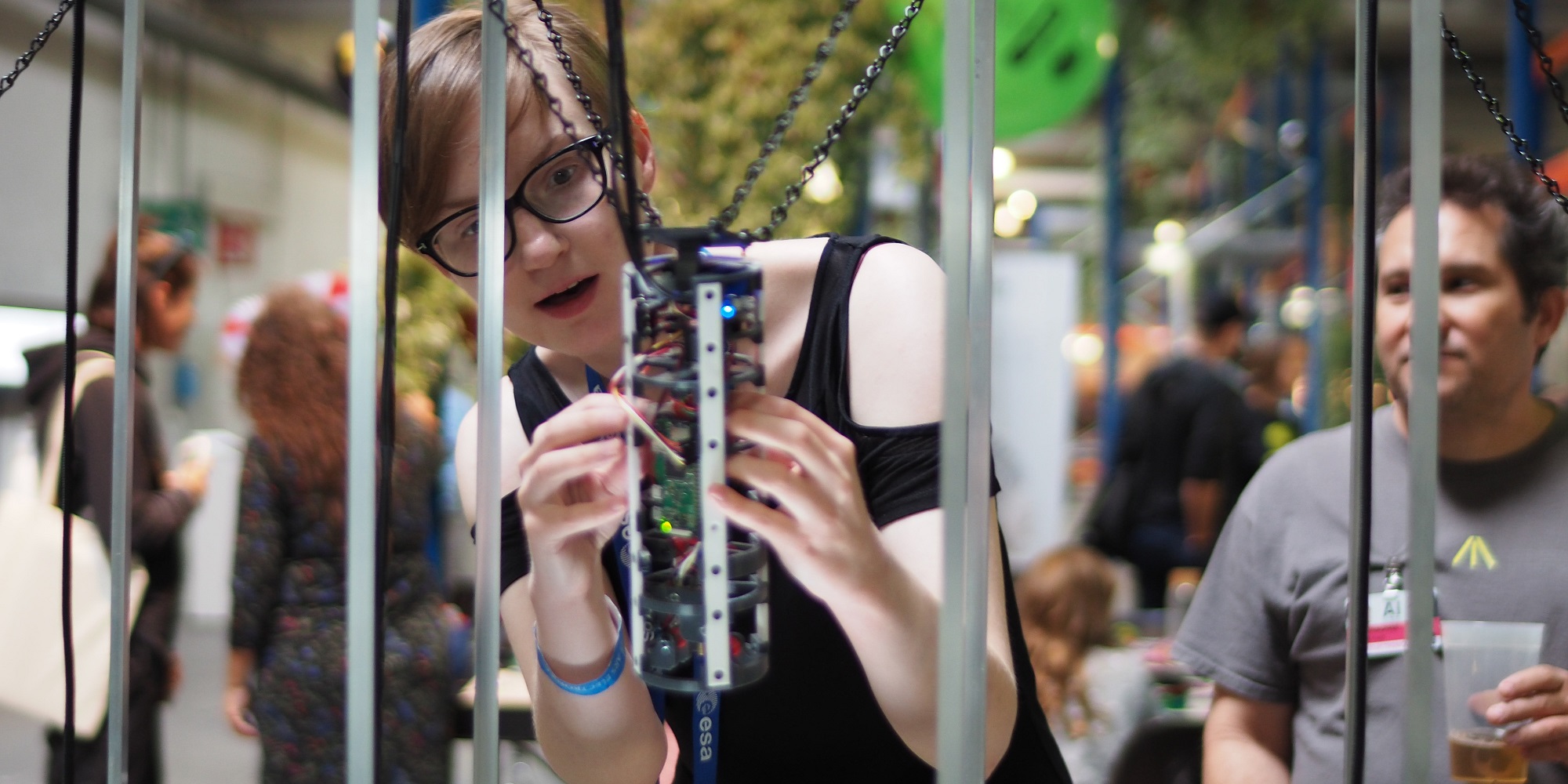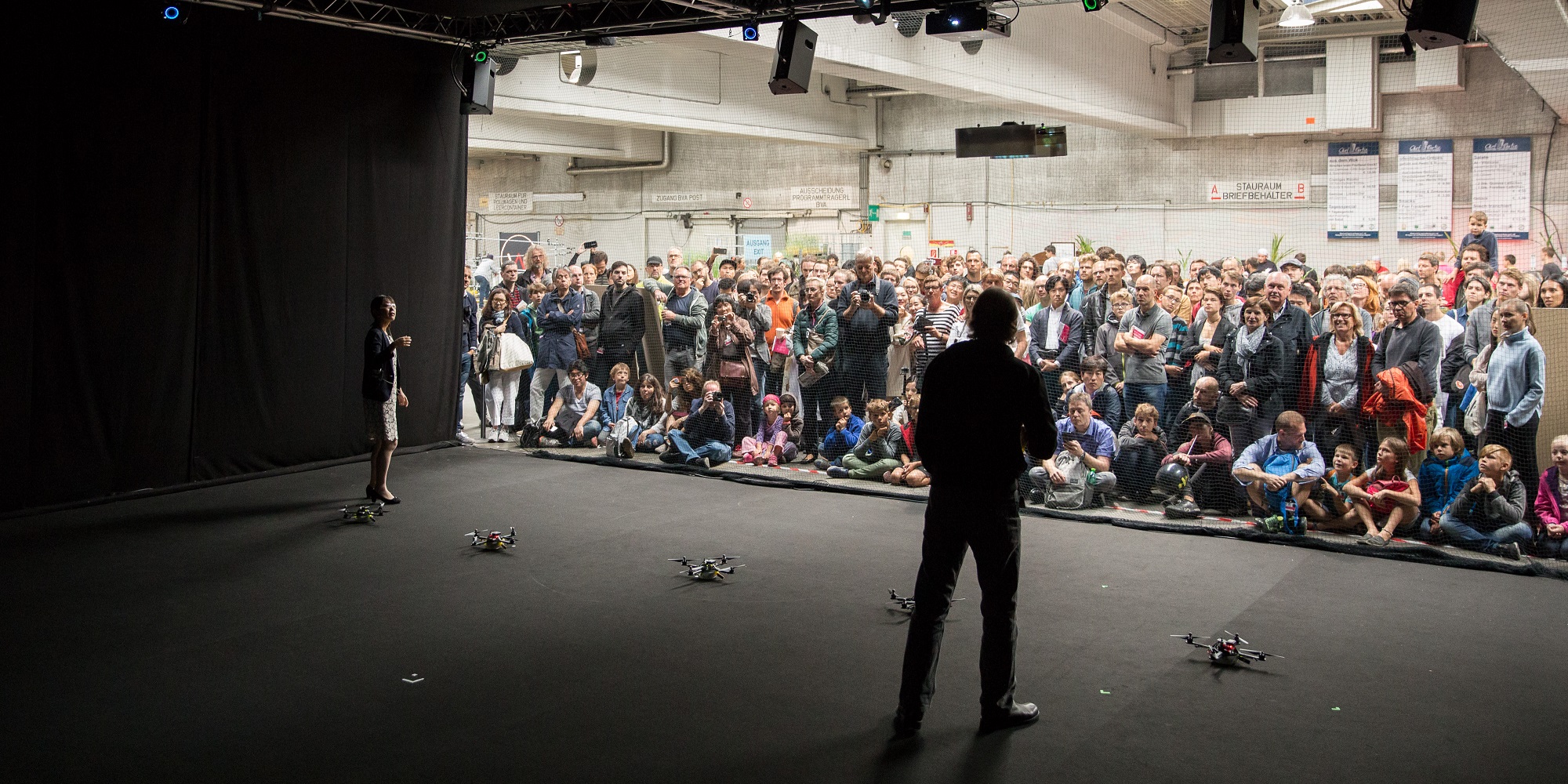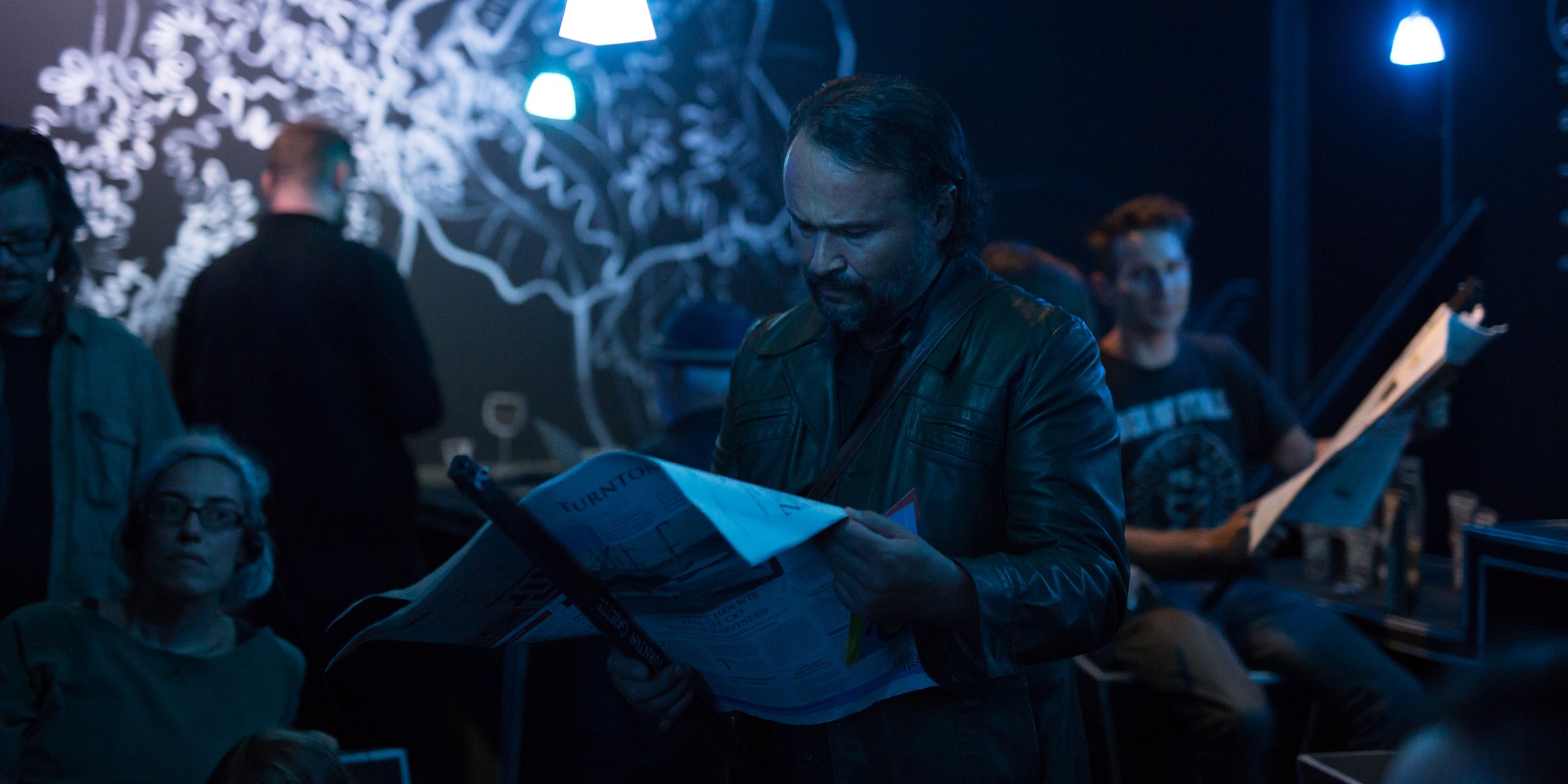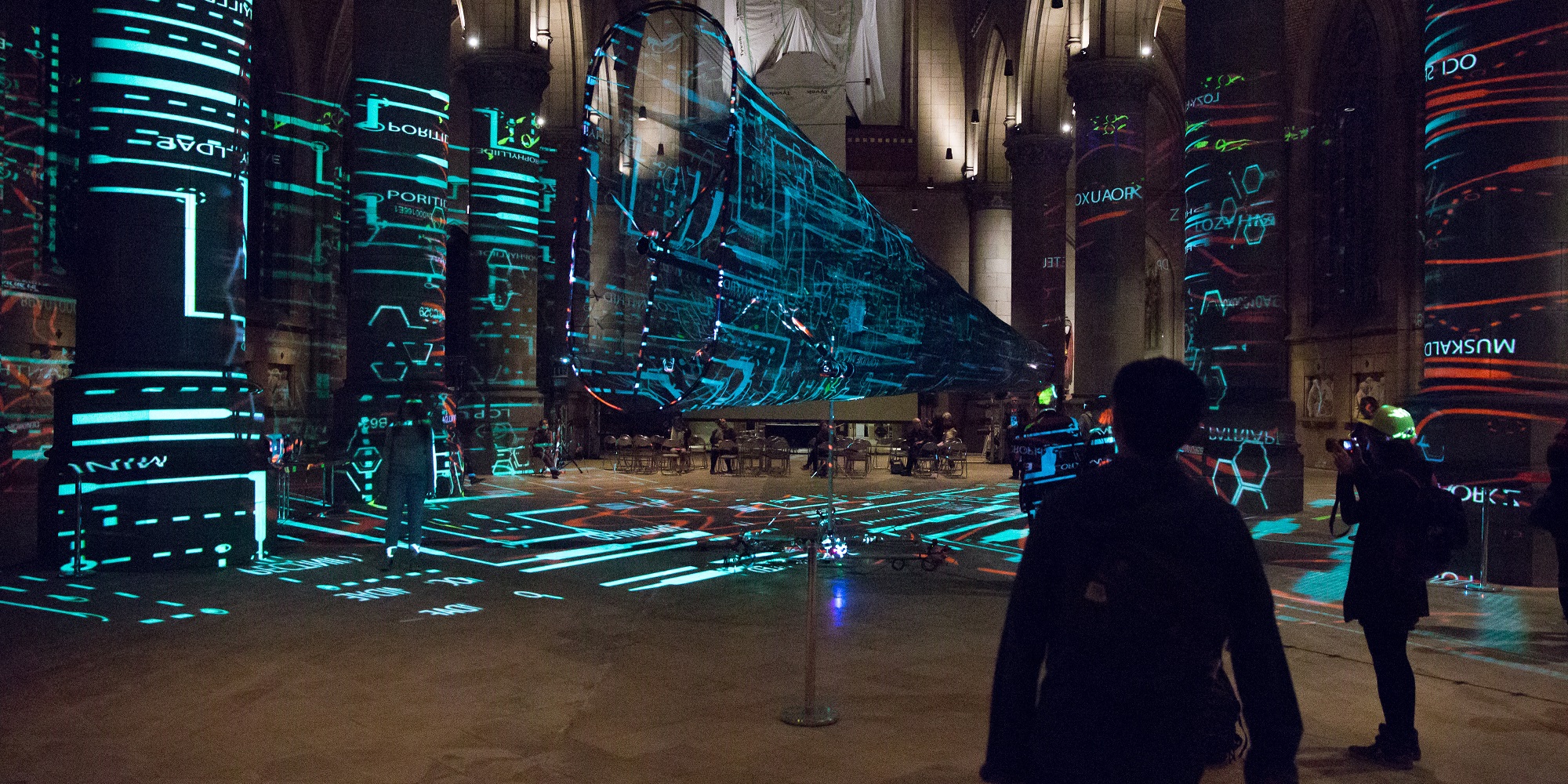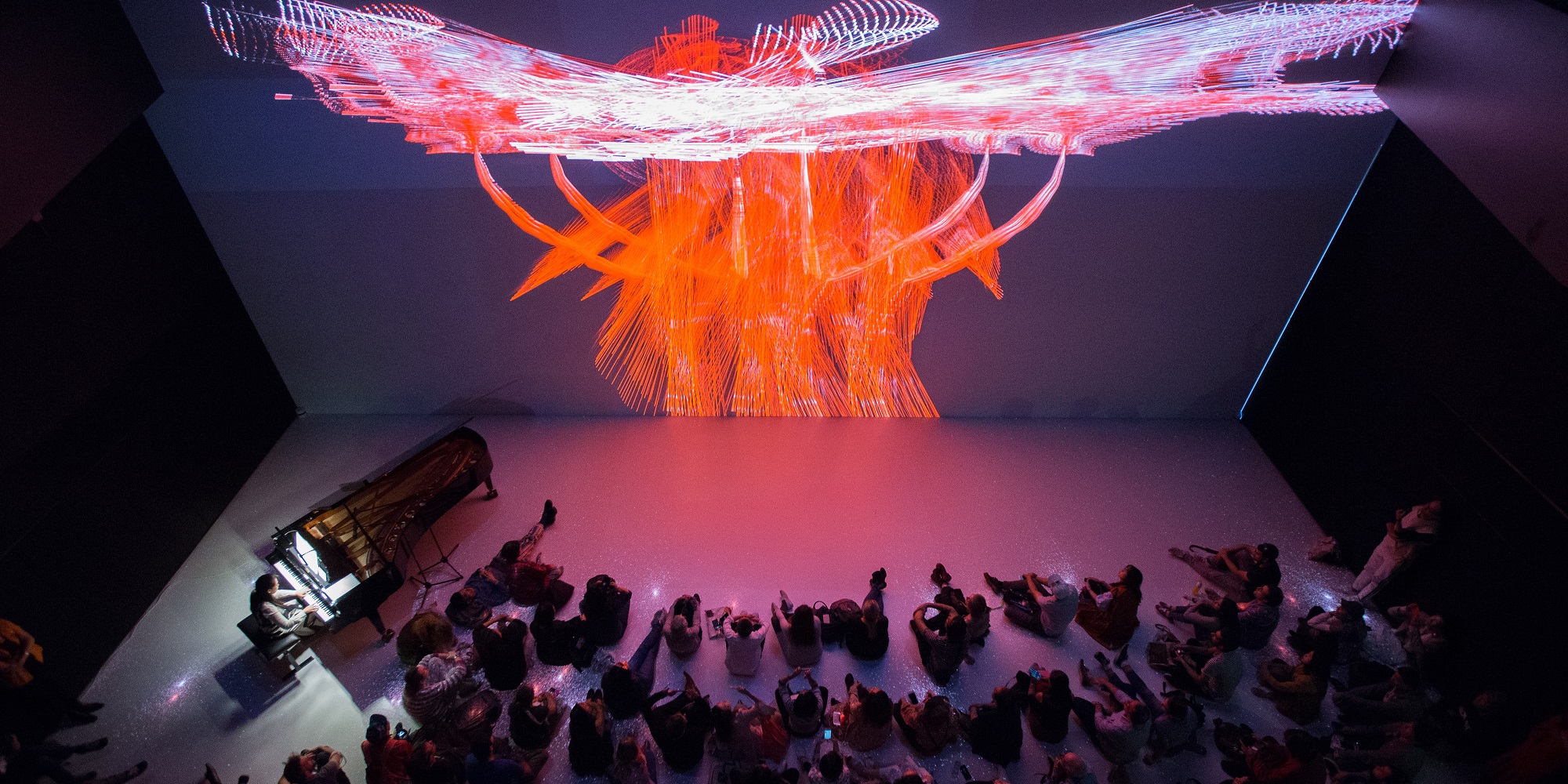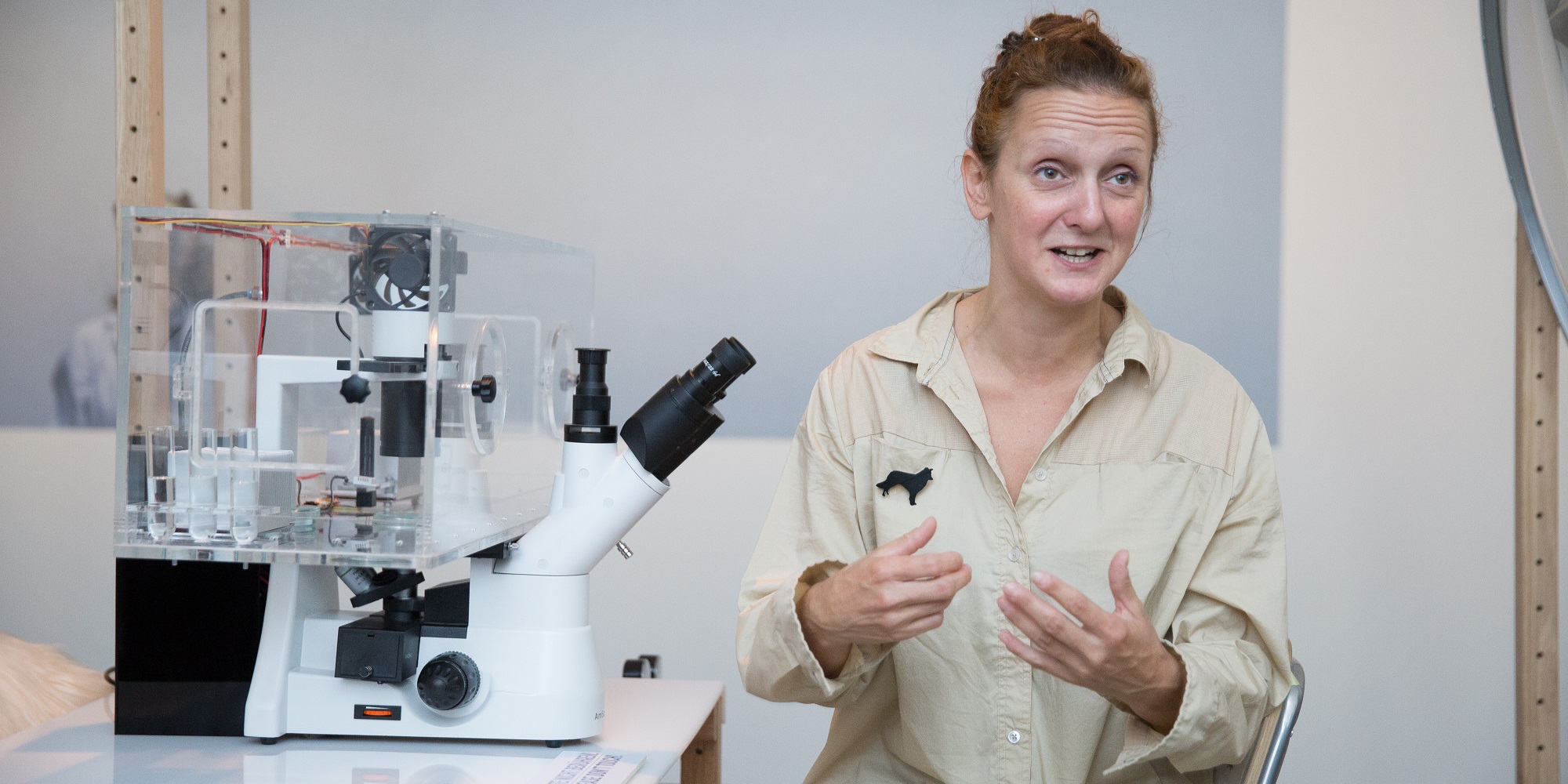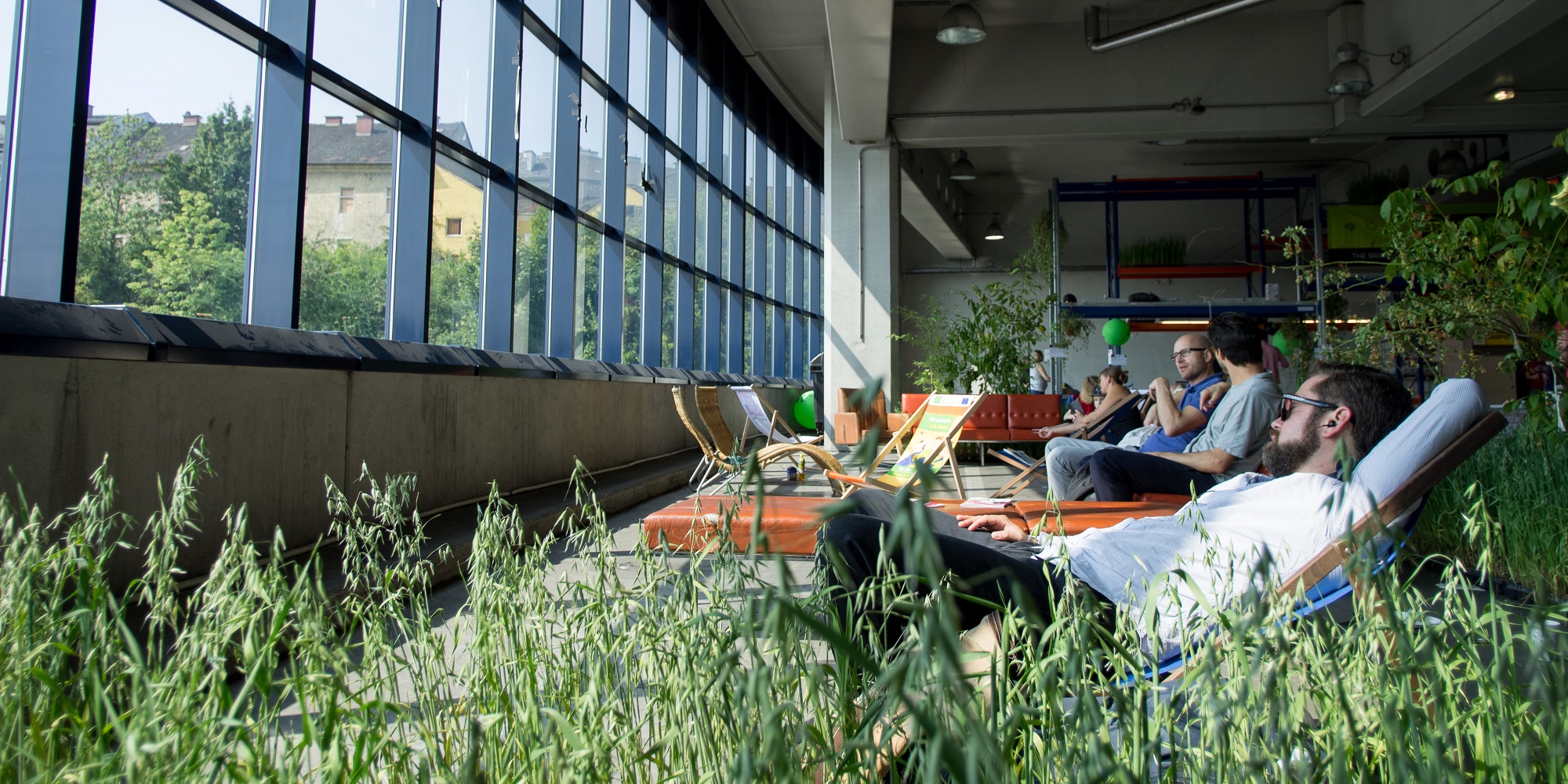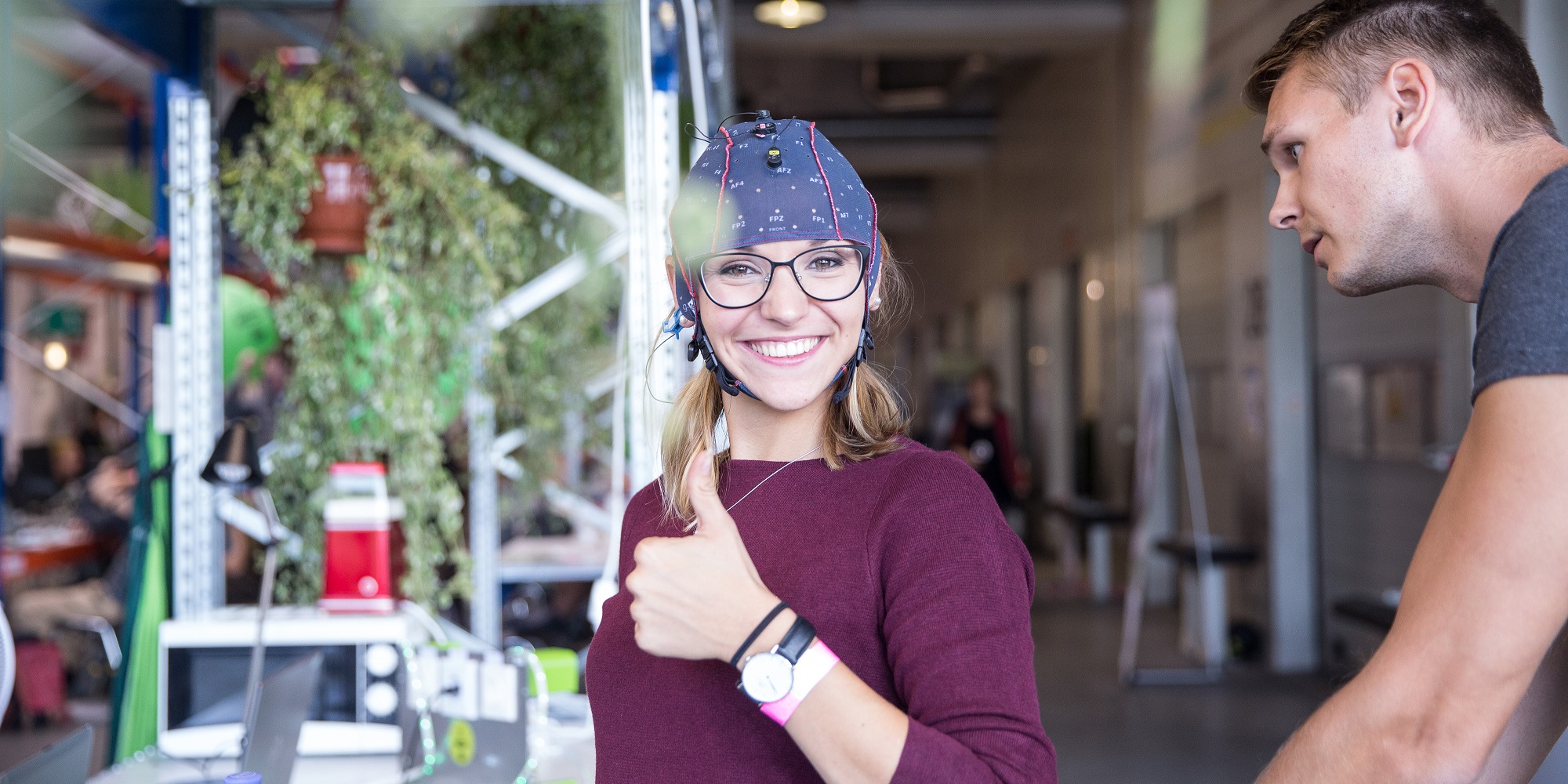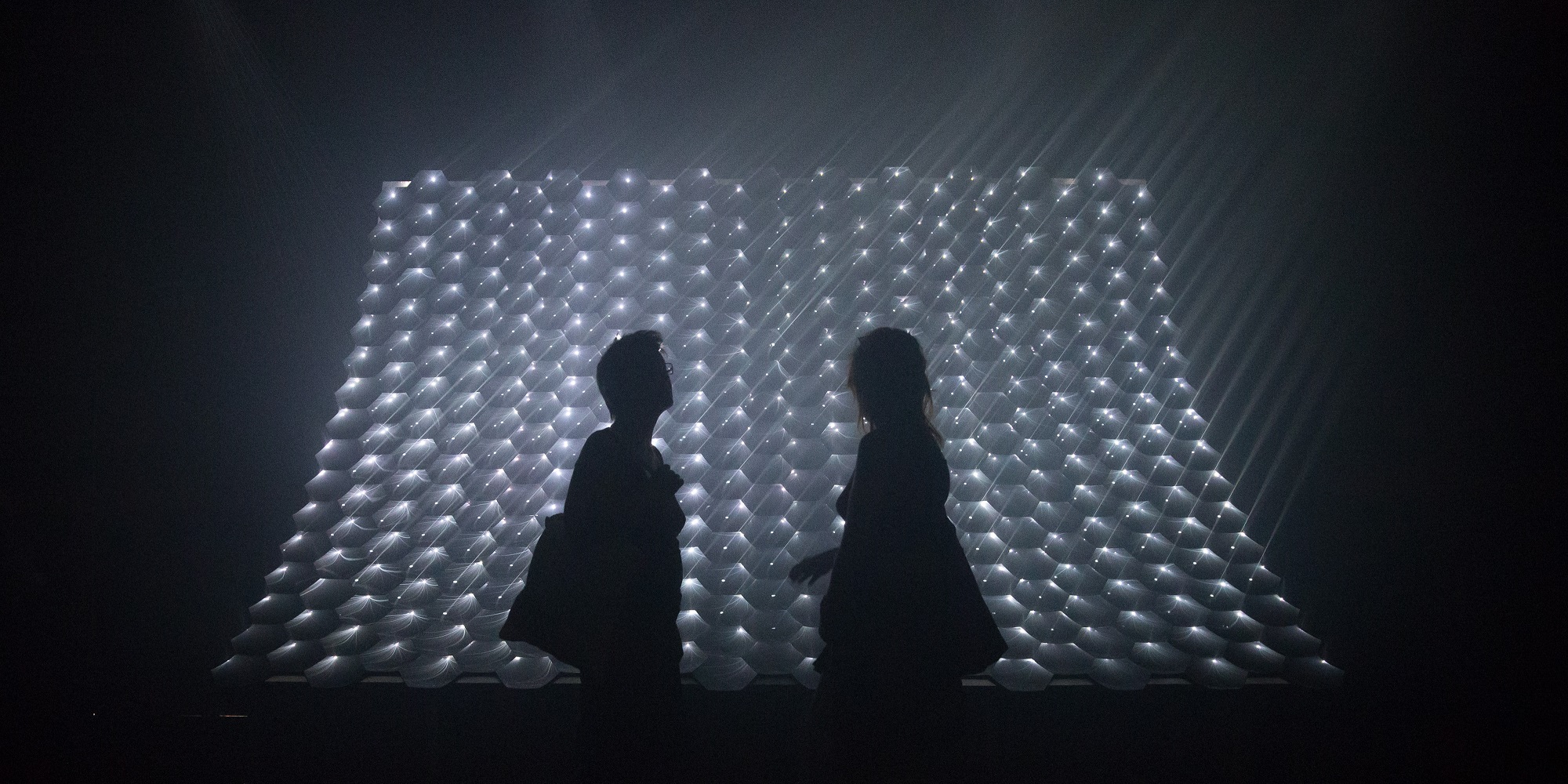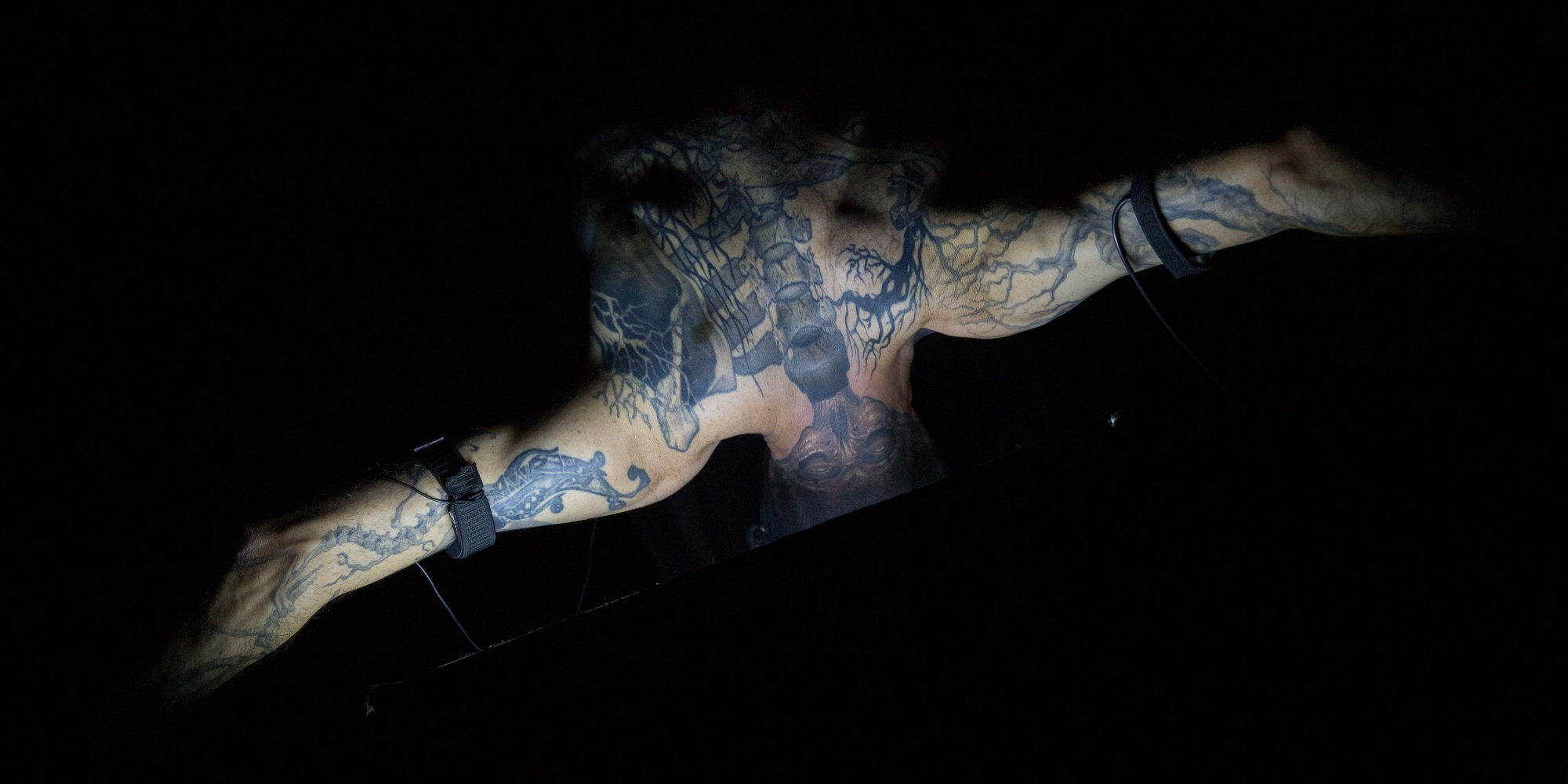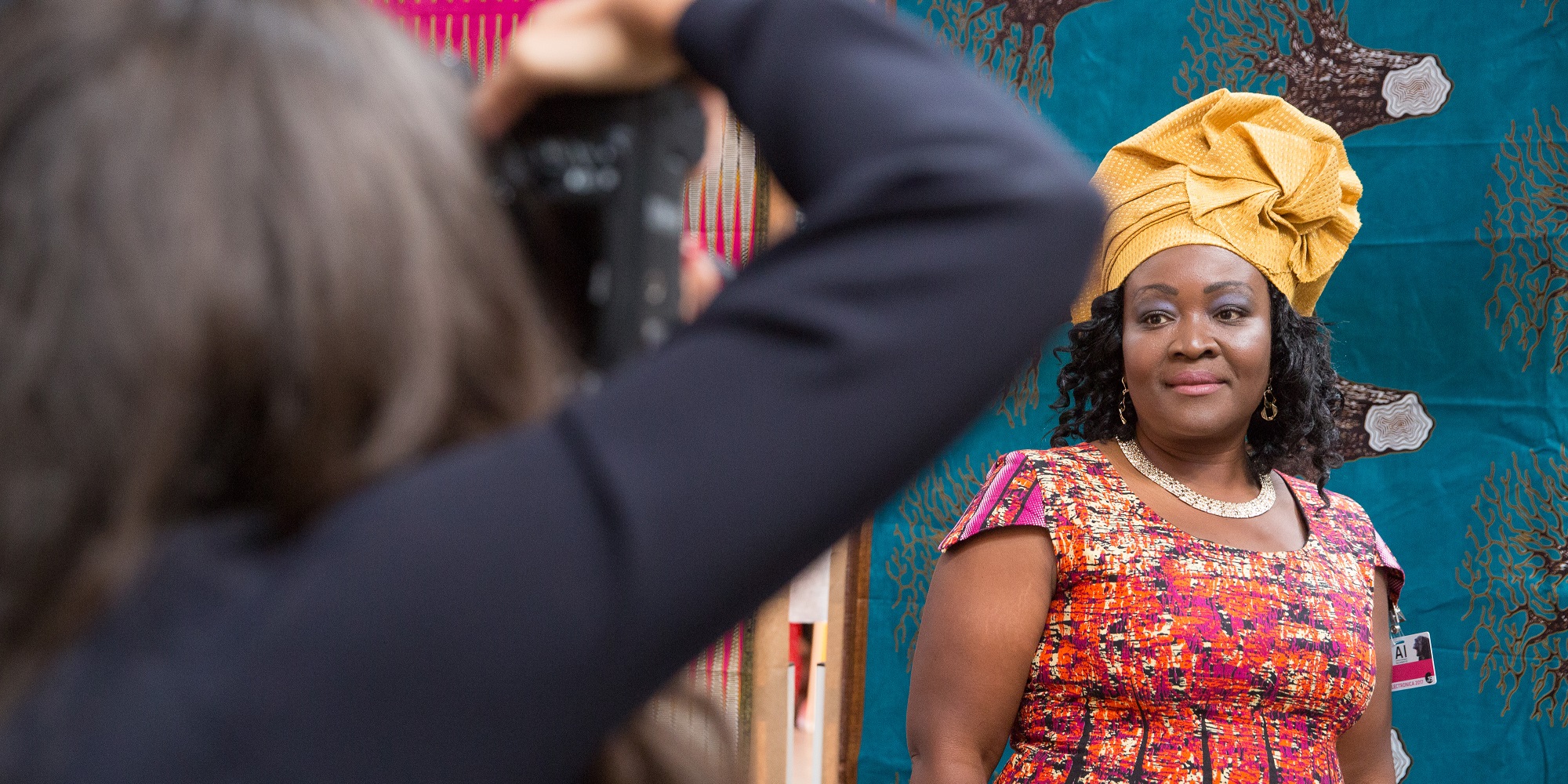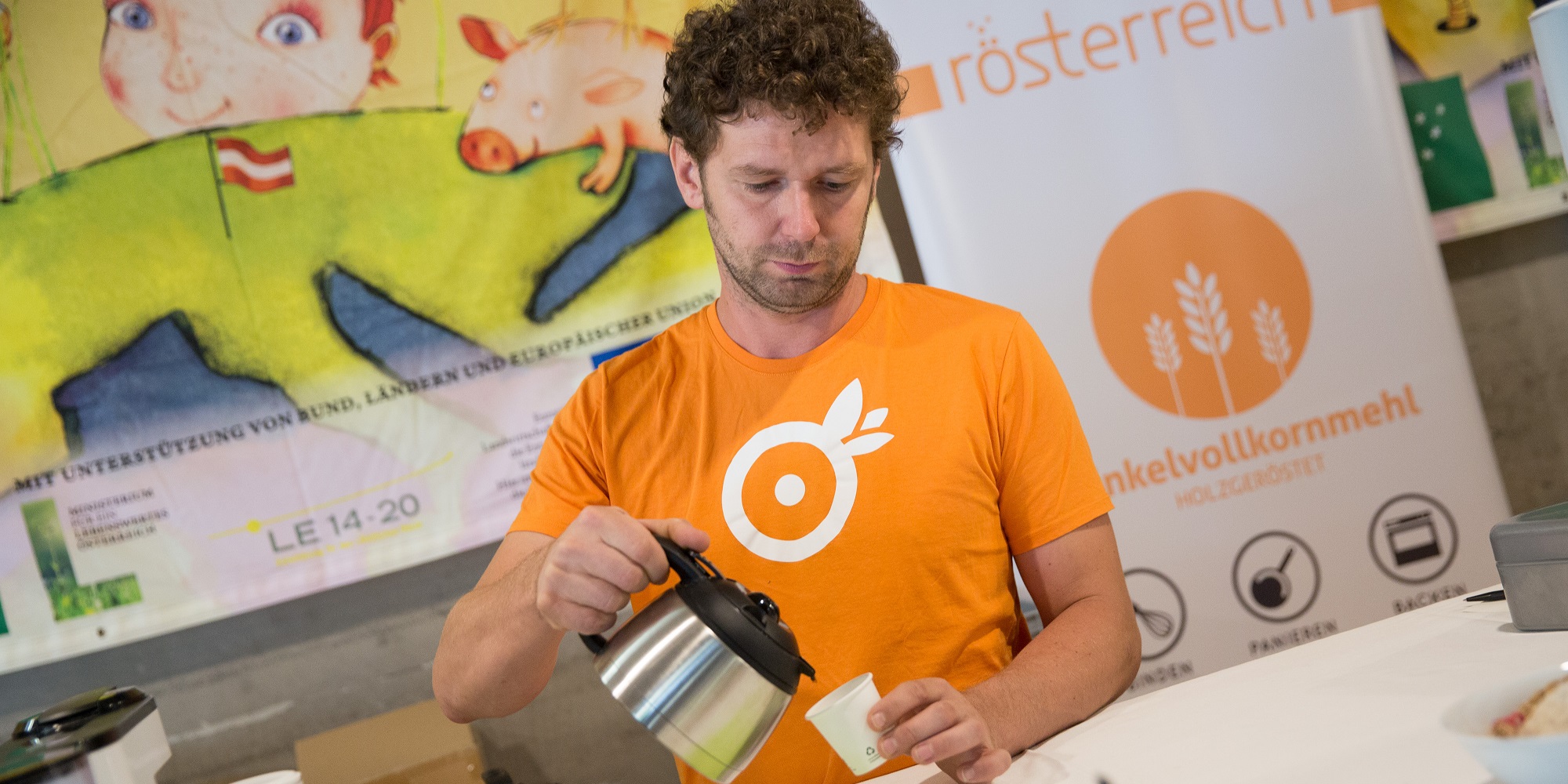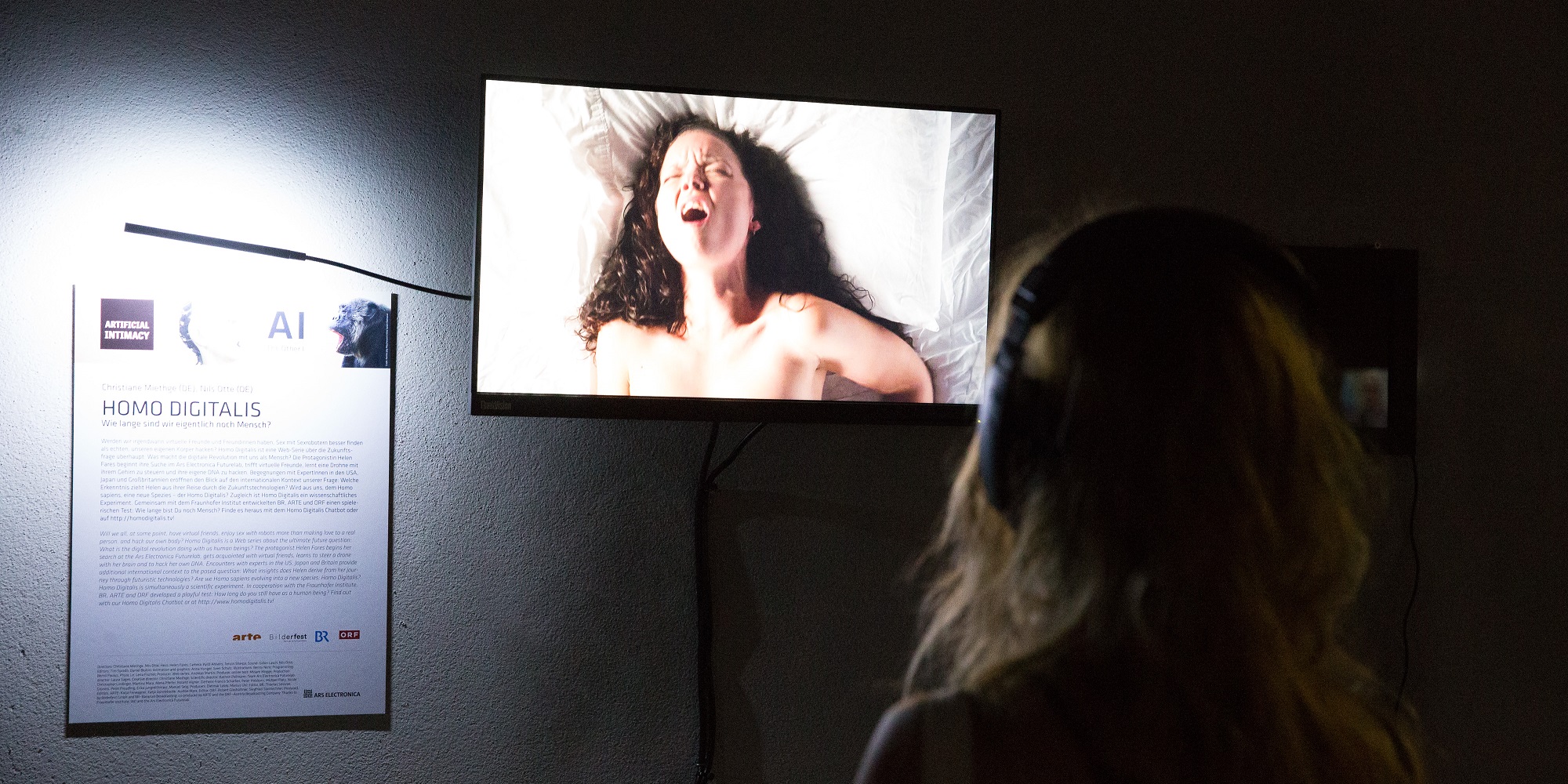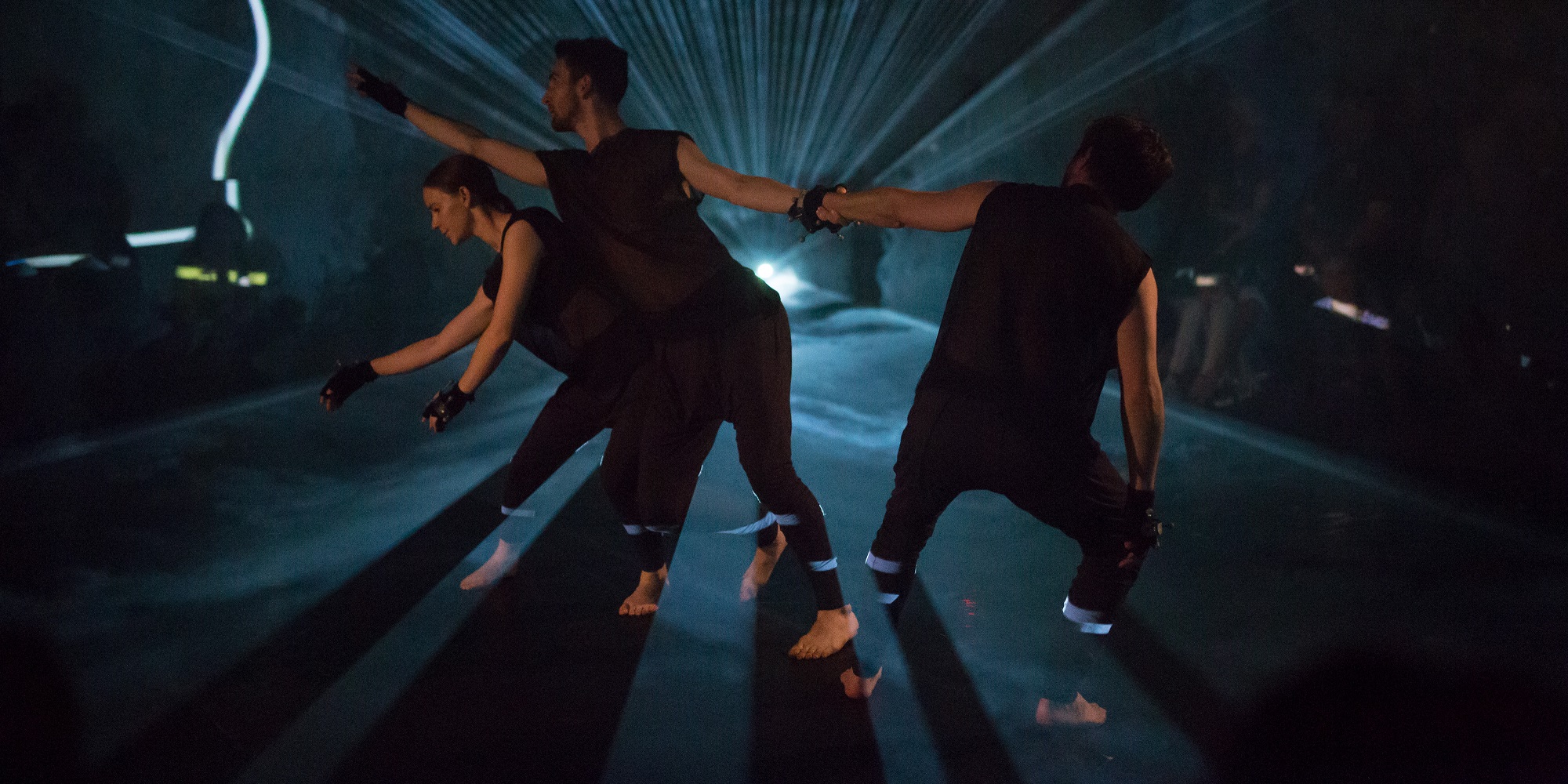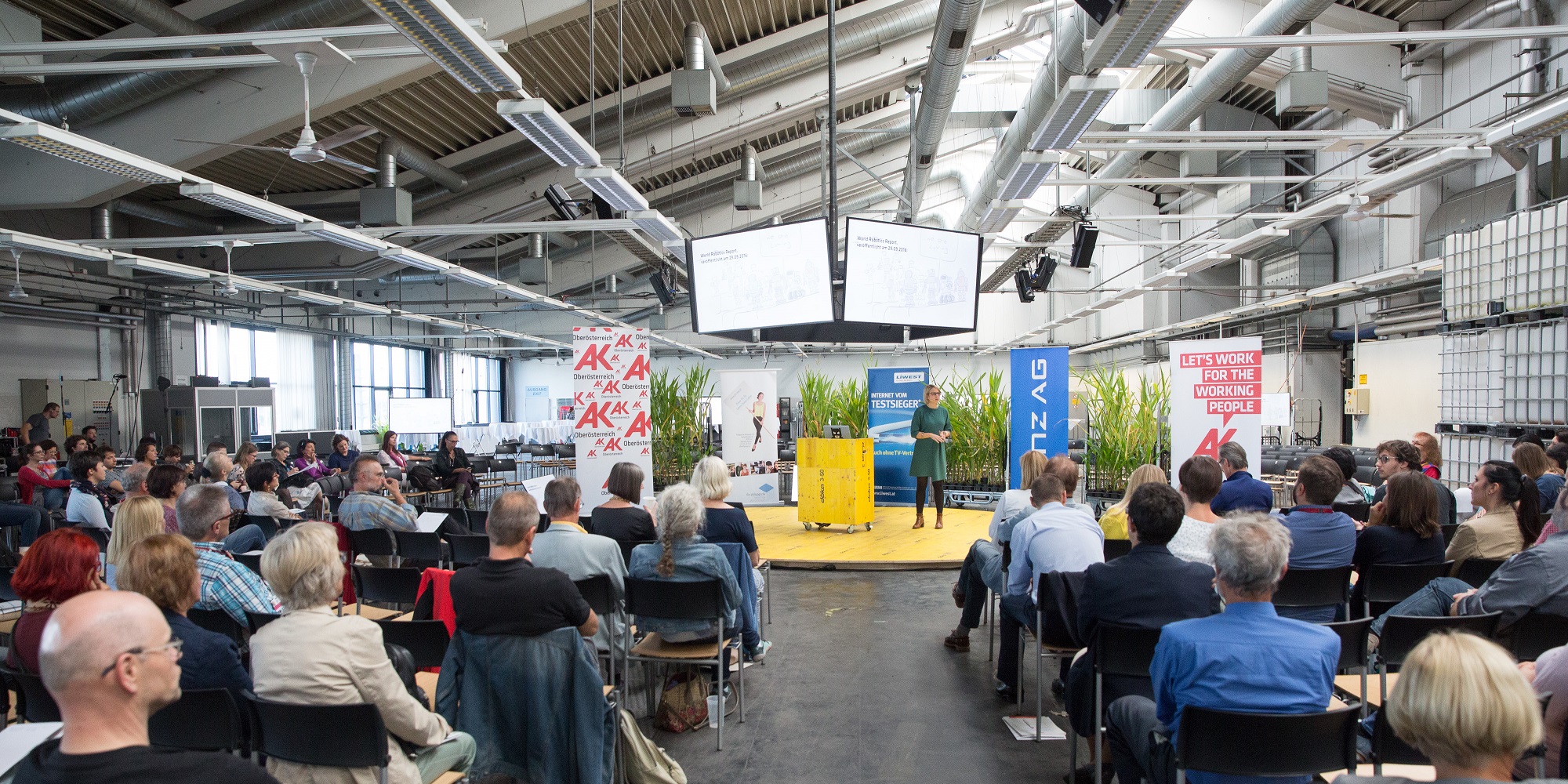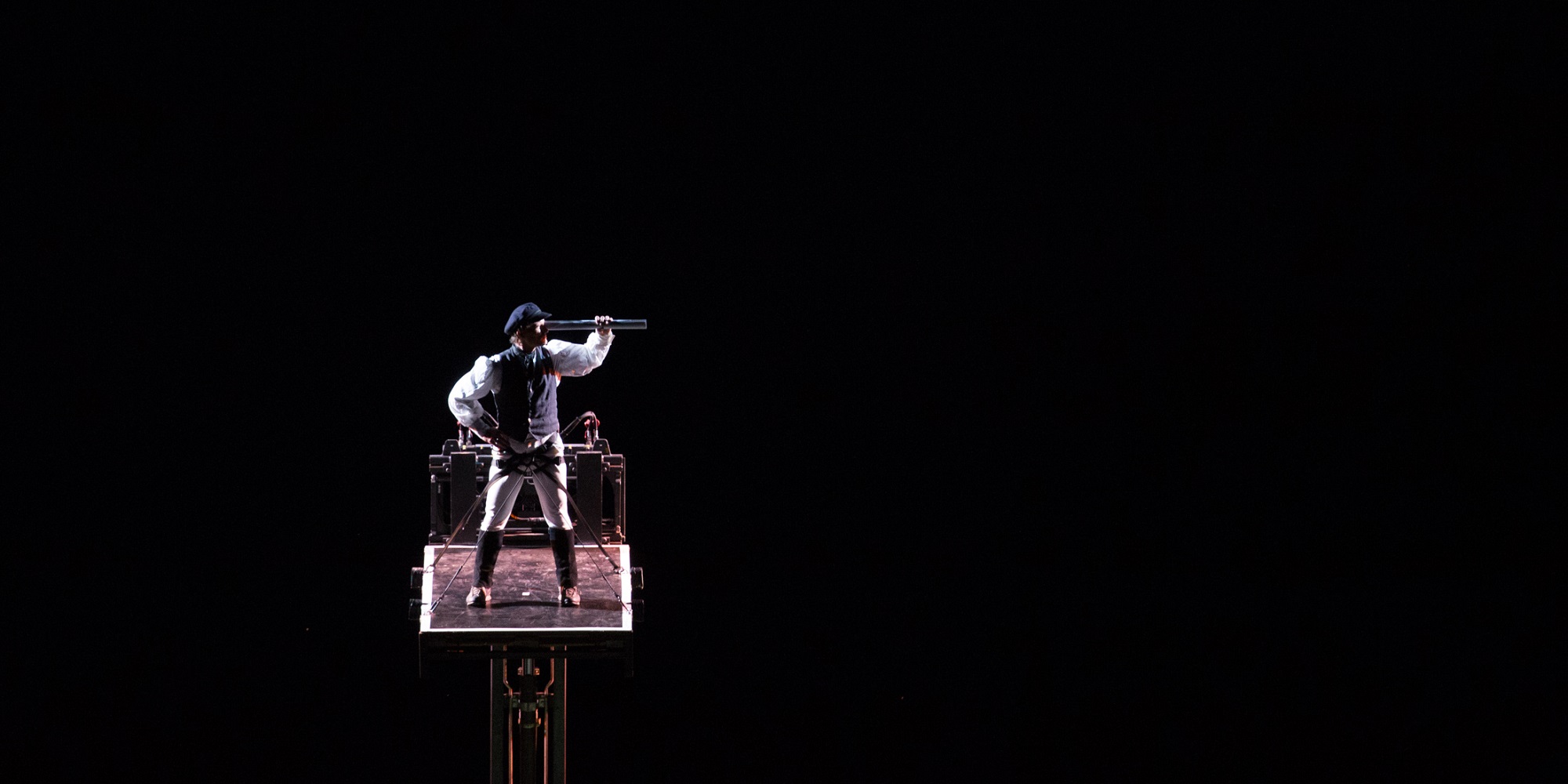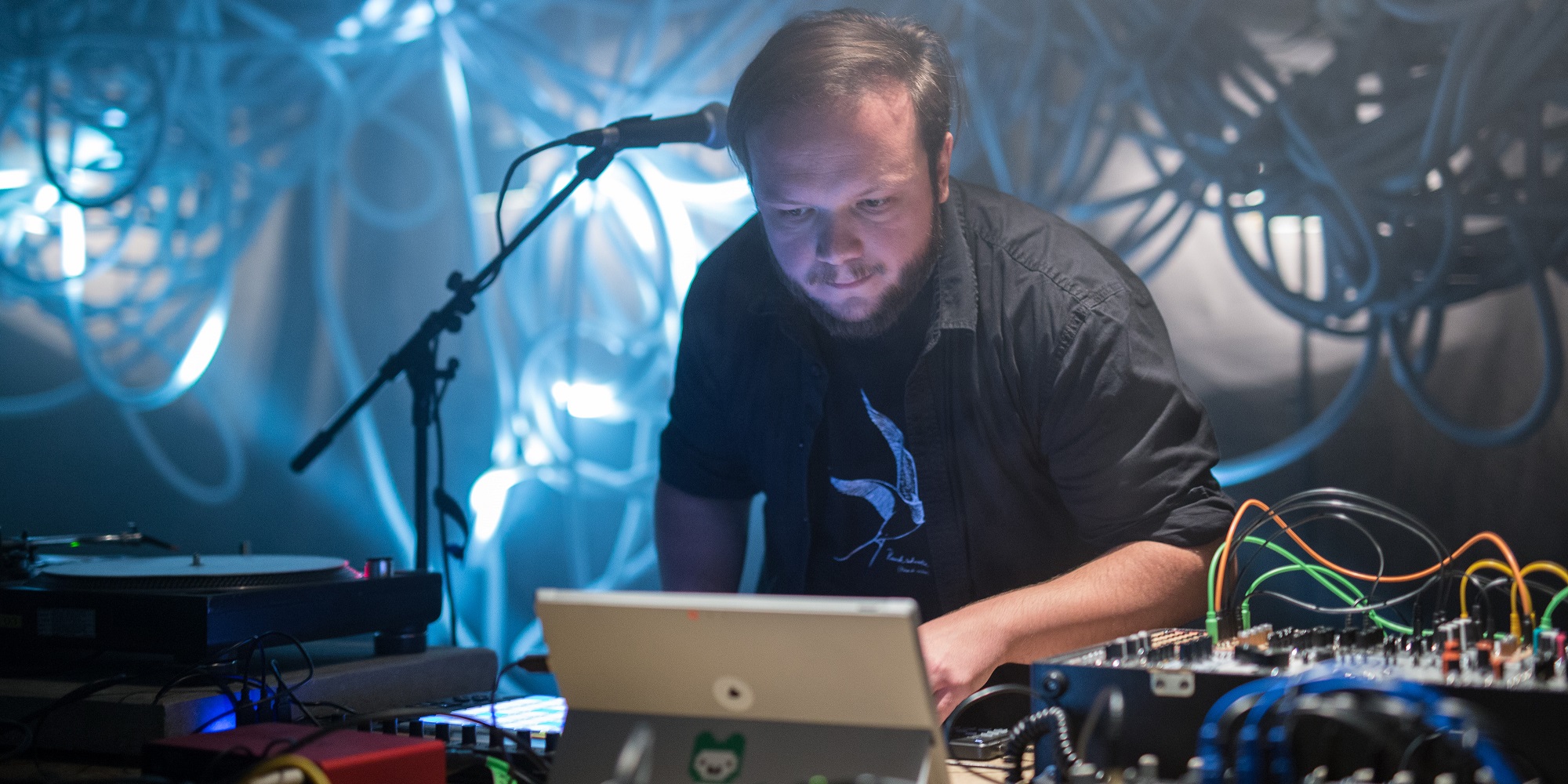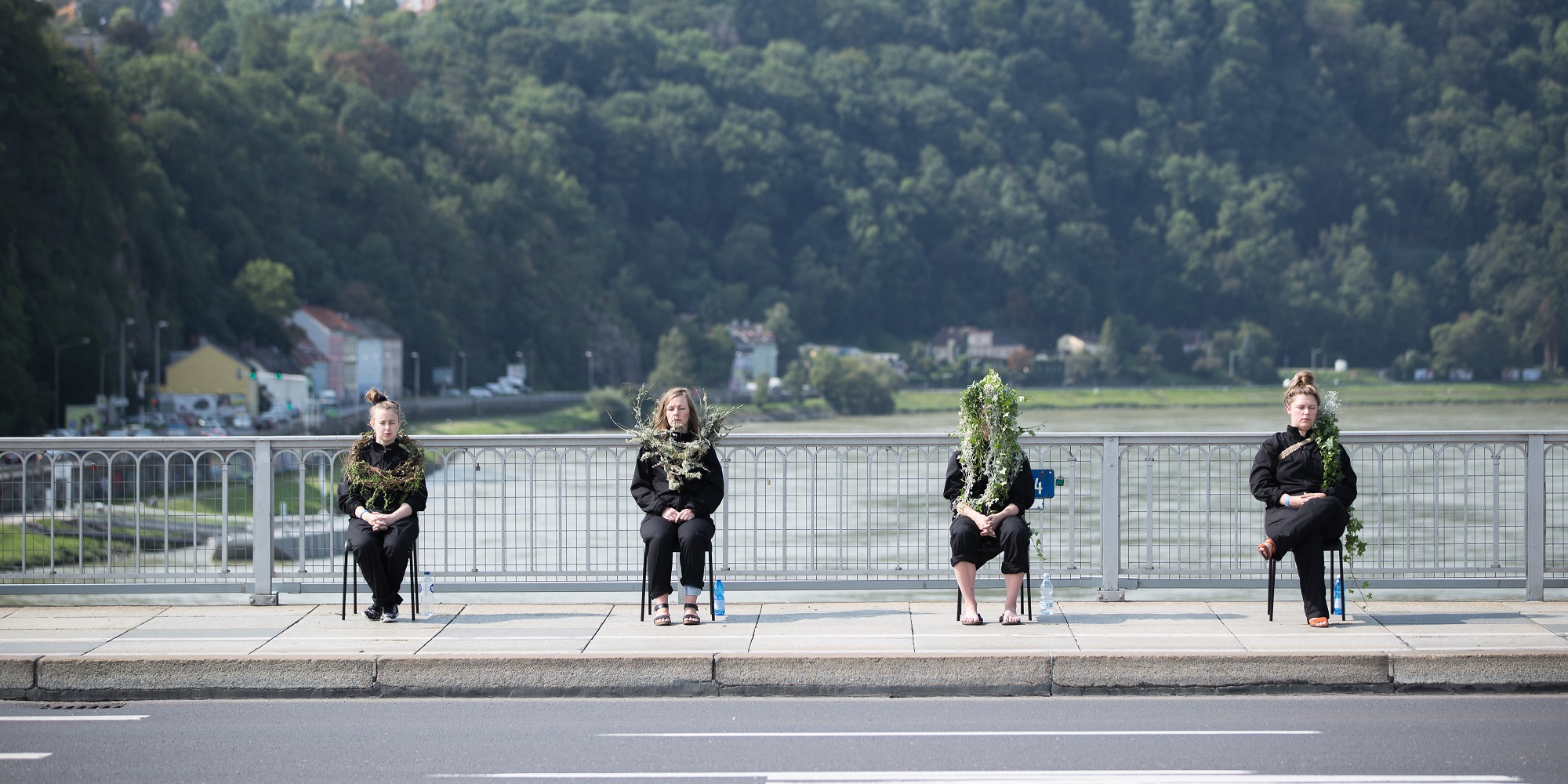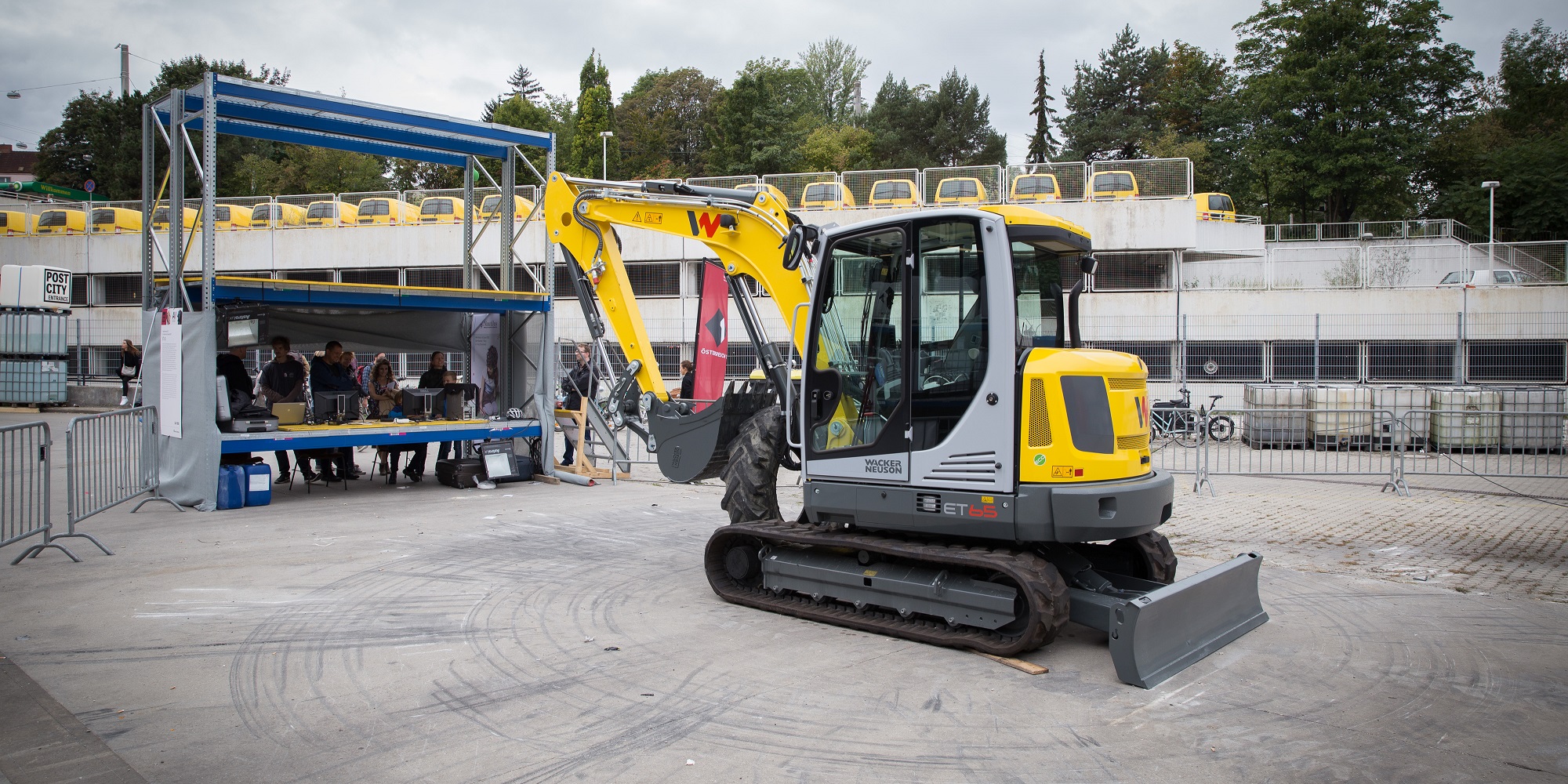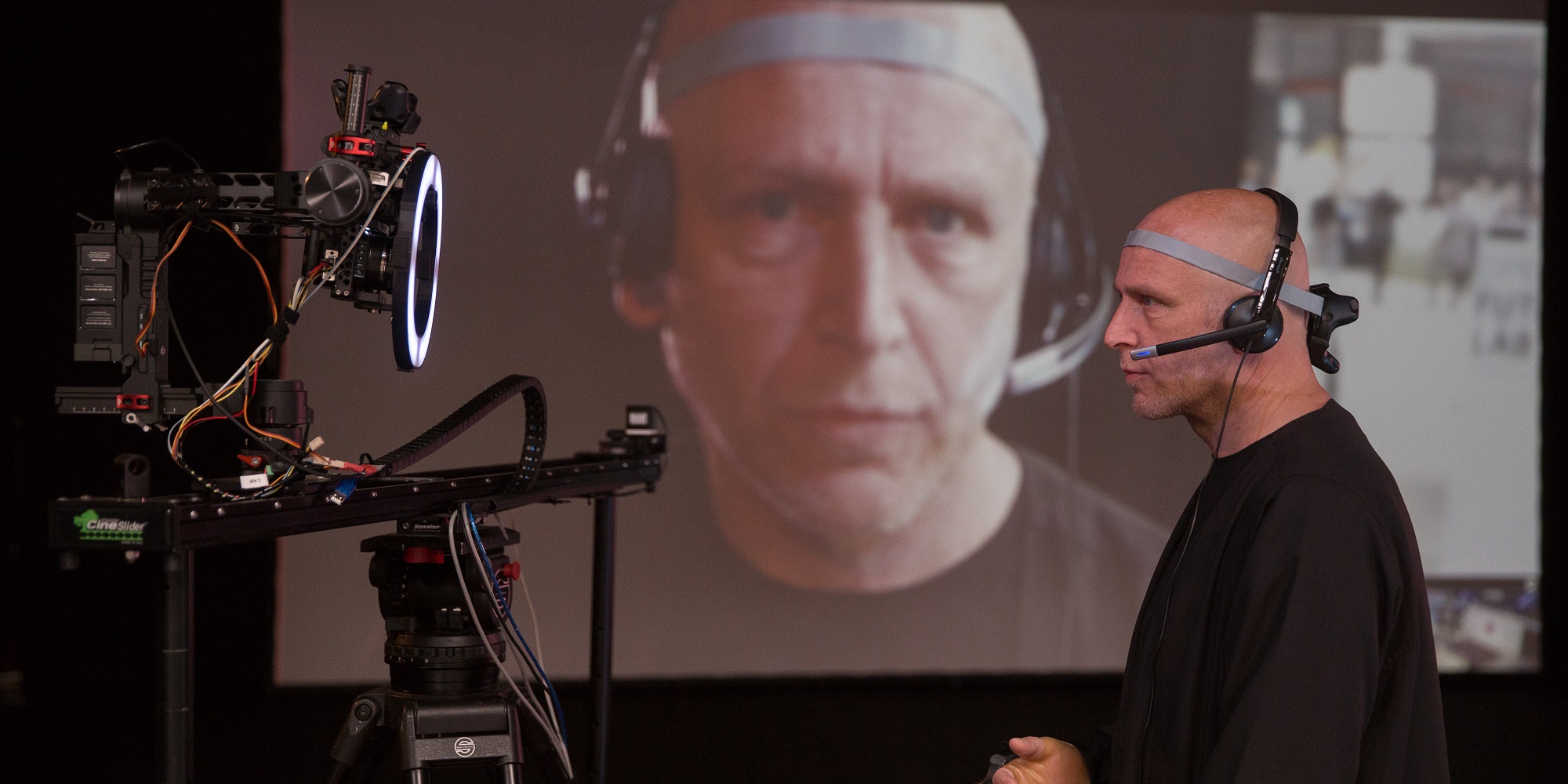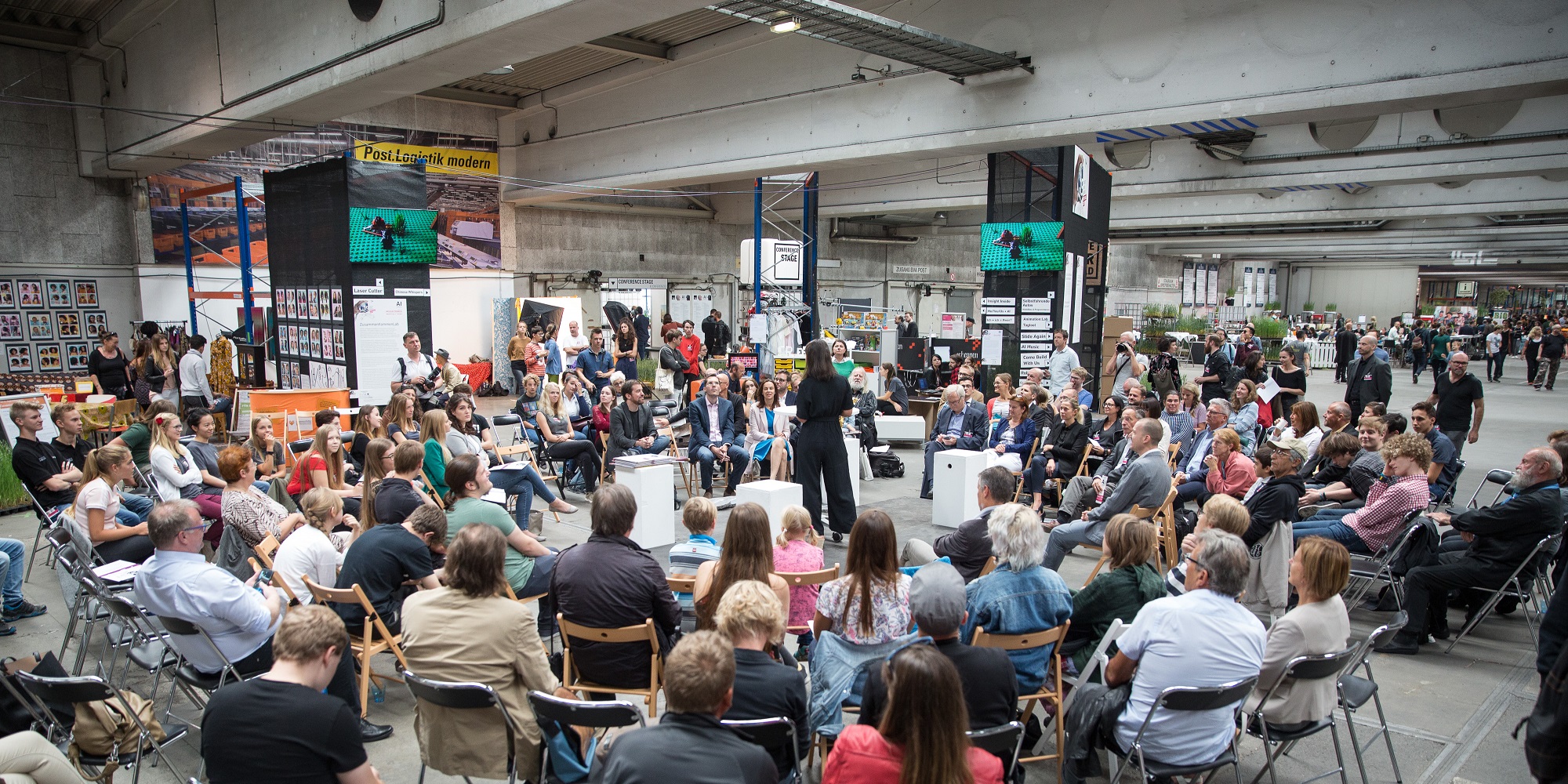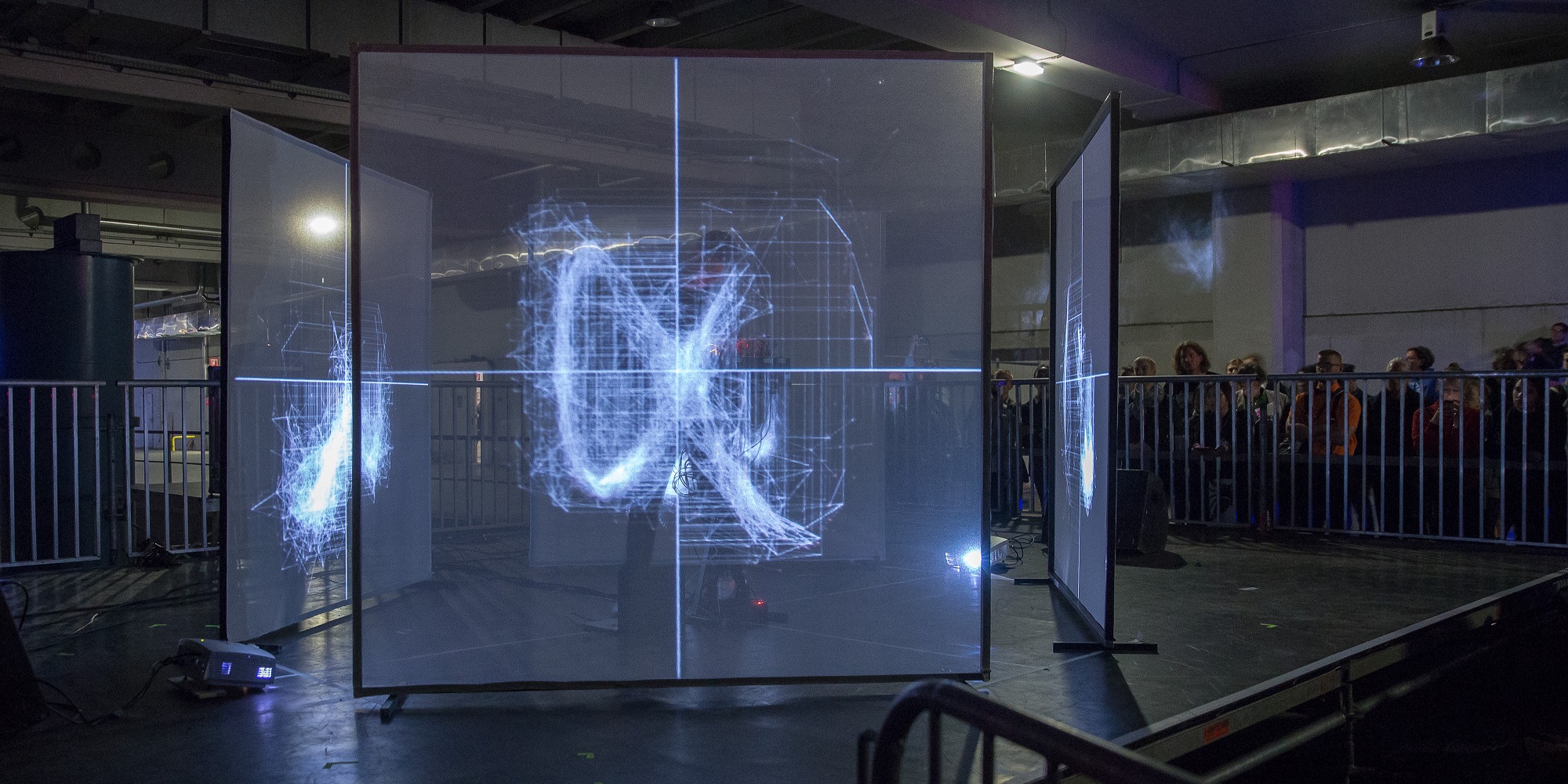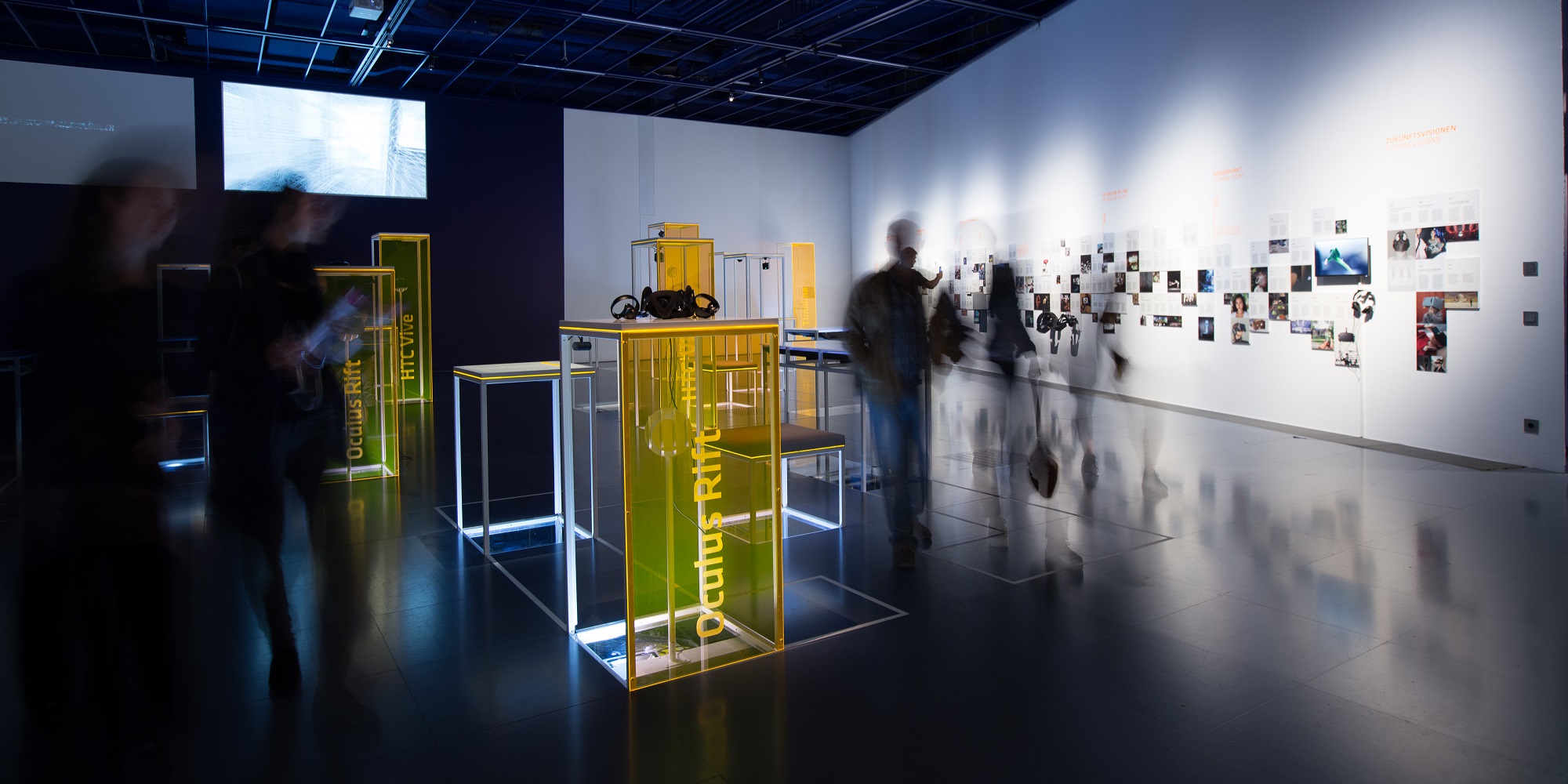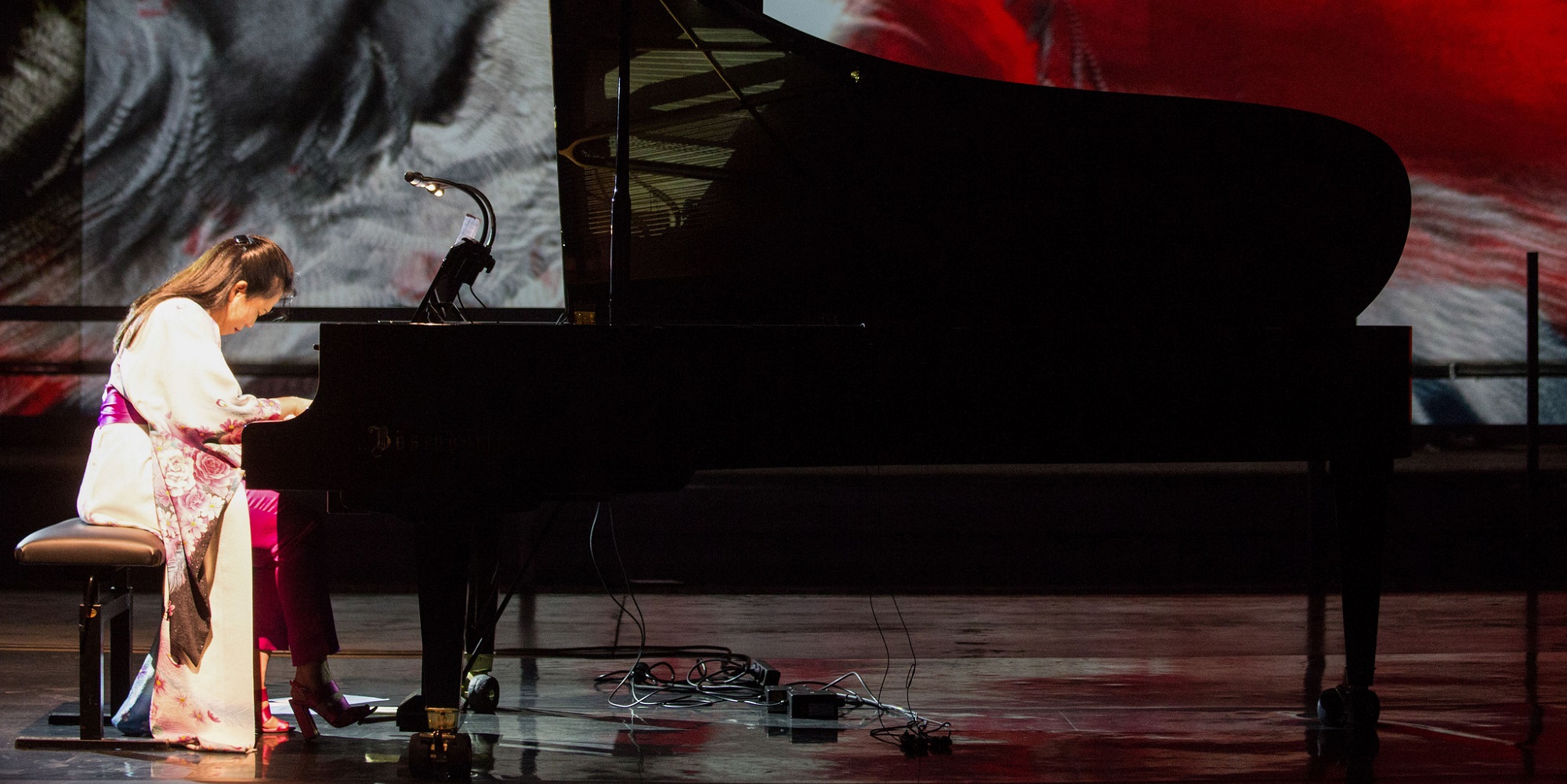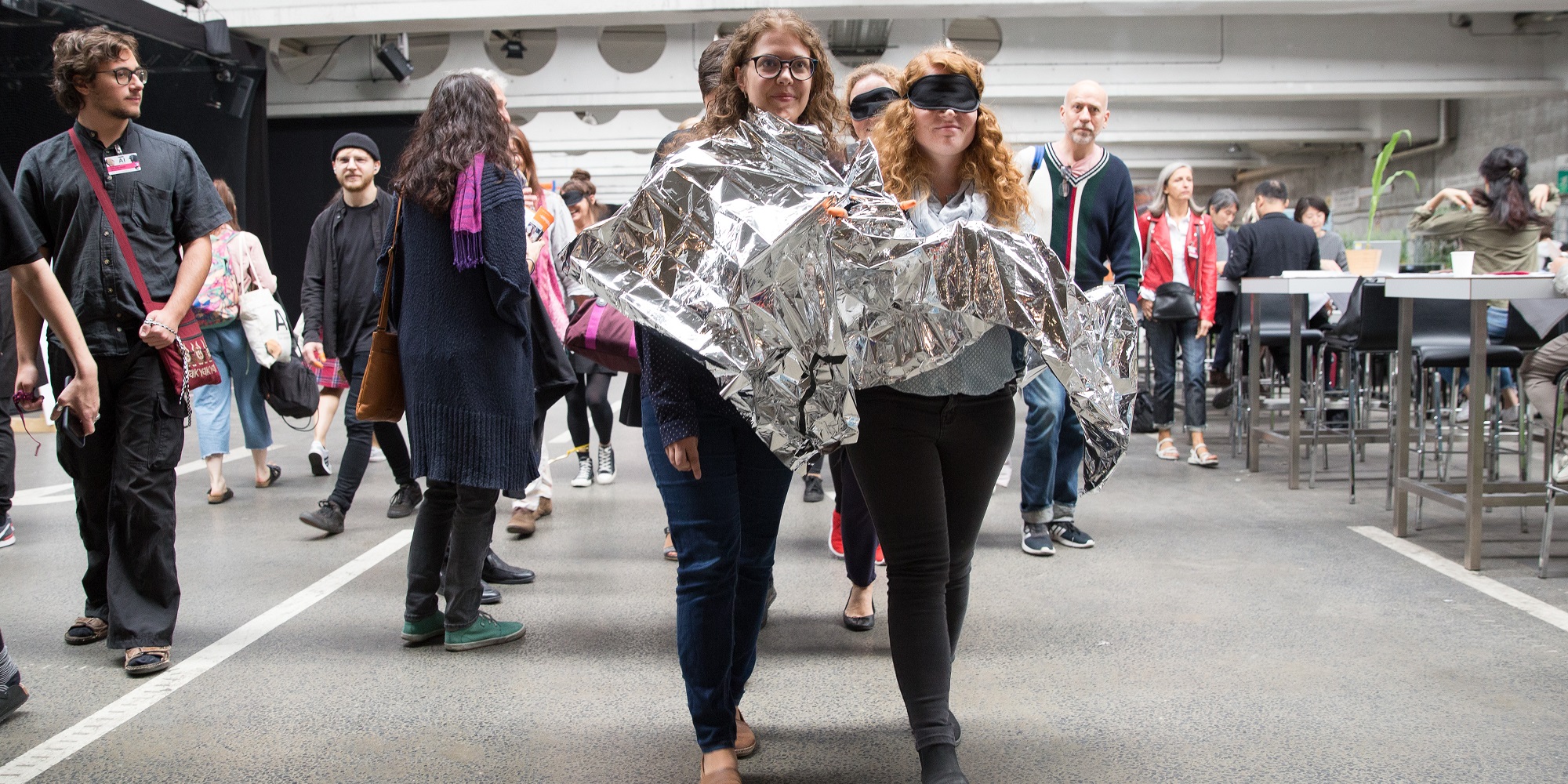More than 1000 artists presented their works for five days straight at 12 different festival locations – a festival which was really filled to the very brim with media arts. Reason enough to have a look back at the best impressions of the 2017 Ars Electronica Festival!
The first festival day was full of visitors already – even though the exhibition space at POSTCITY encompasses more than 80.000 square meters, the old industrial halls didn’t seem empty at all any more.
Credit: Florian Voggeneder
“Nyloïd” by Cod.Act made the waiting time at the ticket counters a bit more exciting for the visitors. The space-filling sound sculpture didn’t only impress because of its sheer size, but most of all because of the bone-chilling sounds it emitted.
Credit: Tom Mesic
Only a few meters away, the first exhibitions started – there was something to discover for everyone.
Credit: Tom Mesic
At “Rock Print”, which one this year’s STARTS Prize in the category of “Innovative Collaboration”, a robot built a giant structure out of pebbles and string right in the middle of POSTCITY.
Credit: Martin Hieslmair
One hall over, Sarah Petkus was showing the four mechanical legs of her robot Noodle Feet….
Credit: Florian Voggeneder
…while NTT and the Ars Electronica Futurelab held frequent presentations on swarm logistics and drones.
Credit: Christopher Sonnleitner
But it wasn’t only the upper floors of POSTCITY that were used for media arts this weekend. The old train hall as well as the basement of the old Postal Service logistics center turned into exhibition spaces for atmospheric artworks and extraordinary projects. “cellF”, for example, is a synthesizer – the only one in the world which is made out of a neural network.
Credit: Florian Voggeneder
Once again, the Ars Electronica Festival took over the entire city of Linz – in total, 12 locations were taking part in the media arts festival. Lentos Museum of Art was turned into a walk-in future situation by our FEATURED ARTISTS Time’s Up.
Credit: Tom Mesic
Even St. Mary’s Cathedral took part in the festival – instead of the usual benches and interior of the large cathedral, visitors found “LightScale II” by Uwe Rieger.
Credit: Florian Voggeneder
Deep Space 8K showed off breathtaking visualizations and presentations. Pianist Maki Namekawa gave a little preview of her work, visualized by artist Cori Olan.
Credit: Florian Voggeneder
The evening’s nightline was well sought-after, as well – huge crowds gathered to celebrate together.
Credit: Florian Voggeneder
With great acts such as Chicks on Speed, it’s no wonder….the night turned into day at the festival’s music and evening program
Credit: Florian Voggeneder
Artist Joseph Herscher went to bed a little earlier – he used the machine he built out of the giant spiral parcel chutes at POSTCITY to put himself into bed.
Credit: Florian Voggeneder
Throughout the day, youngsters worked with the artist on their own Rube-Goldberg-style machine, right in the middle of the u19 CREATE YOUR WORLD festival at POSTCITY.
Credit: Florian Voggeneder
At the Prix Forum at OK Center for Contemporary Art, the winners of this year’s Prix Ars Electronica presented their works…
Credit: Tom Mesic
…while visitors could have a look at the winning projects next door at the CyberArts exhibition. With a little luck, you could even meet the artists themselves – like Maja Smrekar, who explained her series K-9_topology in the middle of the exhibition.
At the Welcome event a few days earlier, the artists were already very excited to be participating in this year’s festival.
Credit: Florian Voggeneder
At the Ars Electronica Gala, the winners of Prix Ars Electronica and STARTS Prize were honored with their trophies.
Credit: Christopher Sonnleitner
Back at POSTCITY, visitors took little breaks from all the things going on around them…
Credit: Tom Mesic
The festival didn’t quiet down at all during the weekend – actually, the opposite was true.
From the old bunker all the way up to the roof – there was lots going on in all floors of POSTCITY.
Credit: Tom Mesic
Hackers and artists had 24 hours to work on Brain Computer Interfaces at the BR41N.IO Hackathon…
Credit: Tom Mesic
…while artist Dragan Ilic demonstrated a few steps over how he uses these Brain Computer Interfaces in his work. In “A3 K3”, the artist controls a giant industrial robot with his thoughts only to paint pictures.
Credit: Florian Voggeneder
Artist Ei Wada played concerts with his remodeled fans throughout the festival.
Credit: Florian Voggeneder
The field of computer animations was once again prominently featured at the 2017 Ars Electronica Festival – the duo Kimchi and Chips, for instance, presented their installation “Light Barrier” at CyberArts exhibition at OK Center for Contemporary Art, which won them an Award of Distinction at this year’s Prix Ars Electronica in the category of Computer Animation/VFX/Film.
Credit: Tom Mesic
Italian artist Marco Donnarumma was also honored for his work. At the Big Concert Night Sunday night, he performed “Corpus Nil” in front of a large crowd.
Credit: Tom Mesic
Like every year, classical music also found its way into the Big Concert Night – Markus Poschner, the new director of Bruckner Orchestra Linz, staged a concert entitled “Departure”. The audience was invited to move freely between the musicians.
Credit: Tom Mesic
Another novelty at the festival: the Gallery Spaces. Media art meets the Art Market – an exciting encounter right in the middle of the basement at POSTCITY.
Credit: Tom Mesic
Different worlds met at the ZusammenKommenLab (Coming Together Lab) as well: Here, projects by and for migrants were presented and exchange was fostered.
Credit: Tom Mesic
Meanwhile, at the Future Innovators Summit, creative thinkers and innovators were brainstorming hard about how our future might possibly look like.
Credit: Tom Mesic
BIO AUSTRIA provided lots of yummy snacks and culinary highlights from Upper Austria on Saturday.
Credit: Florian Voggeneder
On all of the five festival days, those who were brave enough could try the “Neurotransmitter 3000”. The machine measures via multiple biosensors the fear of the subject and adjusts its turning speed based on this information – the more you are scared, the slower it goes and vice versa.
Credit: Florian Voggeneder
This year, for the first time, there was a special WE GUIDE YOU tour for the little ones….
Credit: Florian Voggeneder
….as well as an area restricted to those over 18 only. In the “Artificial Intimacy” exhibition, works that deal with intimacy and artificial intelligence were exhibited.
Credit: Florian Voggeneder
There was no shortage of performances – “Singularity” for example showed an impressive mixture of data, music, dance, and architecture.
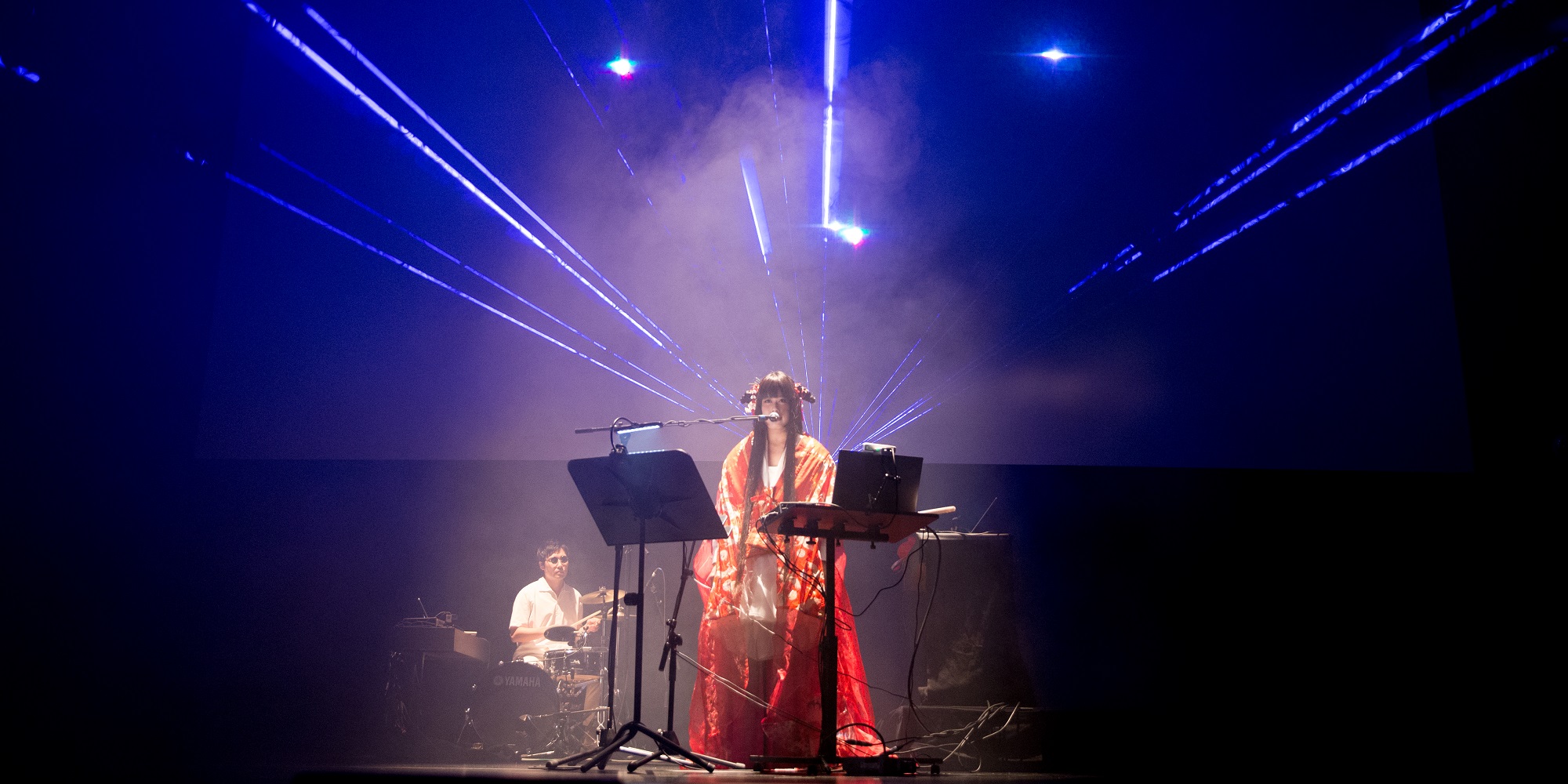
Credit: Florian Vogggeneder
STARTS Prize winner Etsuko Yakushimaro also gave a live performance of her song “I’m Humanity” at the Ars Electronica Gala. The artist received the prize for using DNA as a storage medium for her music piece.
Credit: Tom Mesic
Another highlight were the many conferences and lectures at the festival. The theme symposium on Friday discussed many facets of Artificial Intelligence – starting from mechanical creativity and going all the way to discussing AI spirituality, there was lots to be discovered.
Credit: Florian Voggeneder
“Training 2038” by Kitchen Budapest examined very similar questions. The work explores how an automatic decision tree without any sort of moral conscience would behave.
Credit: Tom Mesic
Just as pressing are the questions that UCLA’s Campus Exhibition “FEMINIST CLIMATE CHANGE: Beyond the Binary” asks. The main topic was eco-feminism, as shown in several impressive works of art.
Credit: Tom Mesic
Saturday evening, the annual Klangwolke proved a perfect start to an exciting night by bringing “Moby Dick” right to the Danube in Linz…
Credit: Florian Voggeneder
…later, the night continued at with OK Night until the wee hours.
Credit: Florian Voggeneder
These artists popped up time and time again at different festival locations: The project “Sumbiophilia” took to the city during the Ars Electronica Festival.
Credit: Florian Voggeneder
Another outdoor installation was this excavator. Visitors could control the giant machine via Brain Computer Interfaces with their thoughts only.
Credit: Florian Voggeneder
More universities than ever before exhibited the works of their students in the Campus exhibition. Here, two visitors are experiencing “Fuzzy_Logic Machine” by Gabriele Gordillo and Irene Ródenas Sáinz de Baranda.
Credit: Florian Voggeneder
Festival director Martin Honzik enjoyed getting to see and interact with so many works of media art as well – like here, for example, with Cinema Swarm by Jaymis Loveday.
Credit: Tom Mesic
At the u19 Ceremony, the young winners of the u19 category at Prix Ars Electronica were awarded their trophies.
Credit: Florian Voggeneder
Artist Aoife van Linden Tol presented her explosive performance “Star Storm” – with its many explosions, fireworks, explosive charges, and smoke bombs, it could not have been any more spectacular.
Credit: Florian Voggeneder
At the Ars Electronica Center, Prof. Hiroshi Ishii and his team showed new works at the “RADICAL ATOMS” exhibition. They all experiment with new materials, like here at the project “kinetiX”.
Credit: Florian Voggeneder
The live acts were exceptional in their diversity this year – Alex Augier for example performed “_nybble_” right in the midst of visualizations.
Credit: Florian Voggeneder
The Ars Electronica Center saw the opening of the new VRLab.
Credit: Tom Mesic
Maki Namekawa played an impressive concert and concluded the Festival in a musical way.
Credit: Florian Voggeneder
The 2017 Ars Electronica Festival – five days full of vivid impressions, concerts, exchanges, and, most of all, media art! We’re already excited for next year’s edition…
